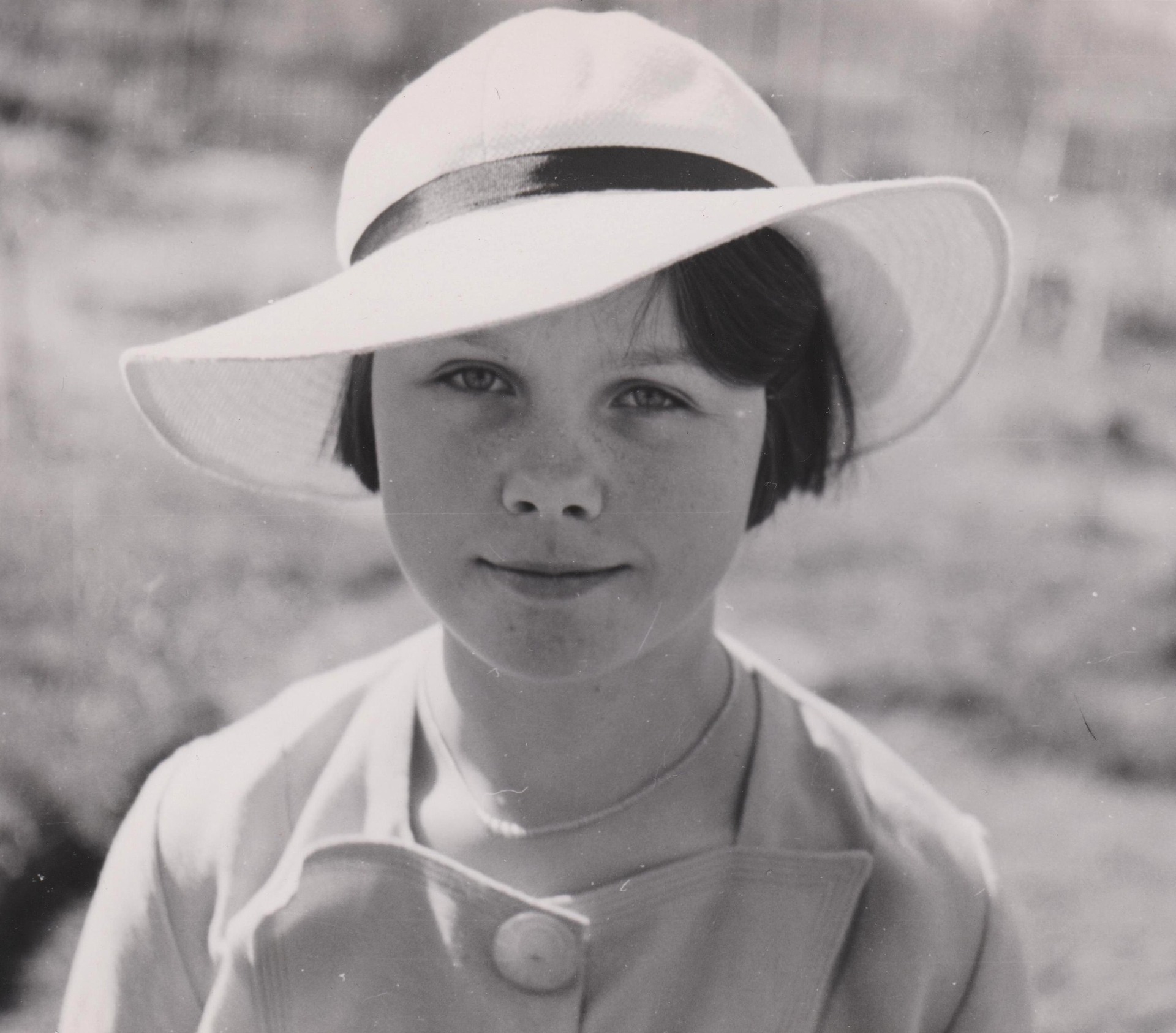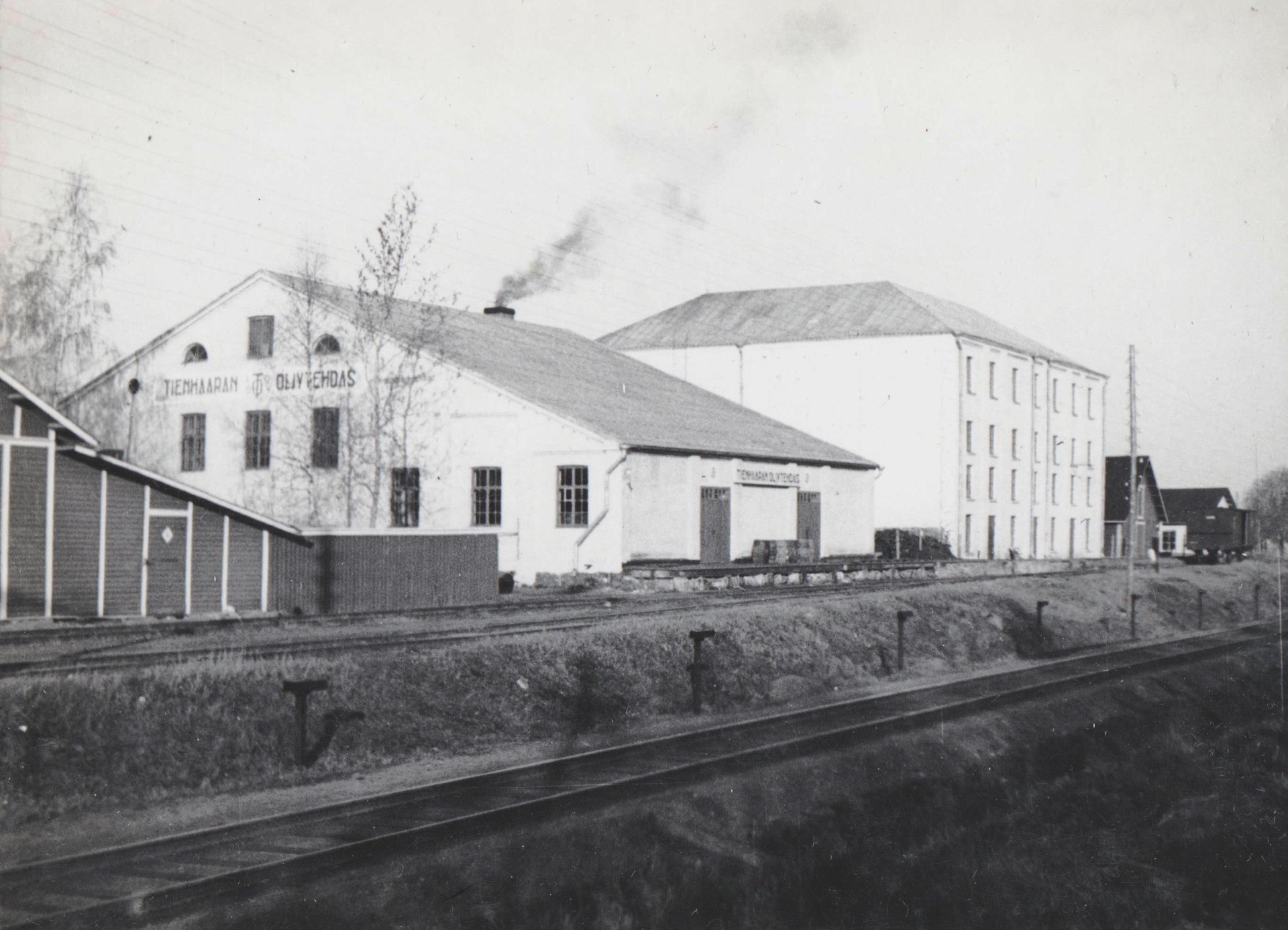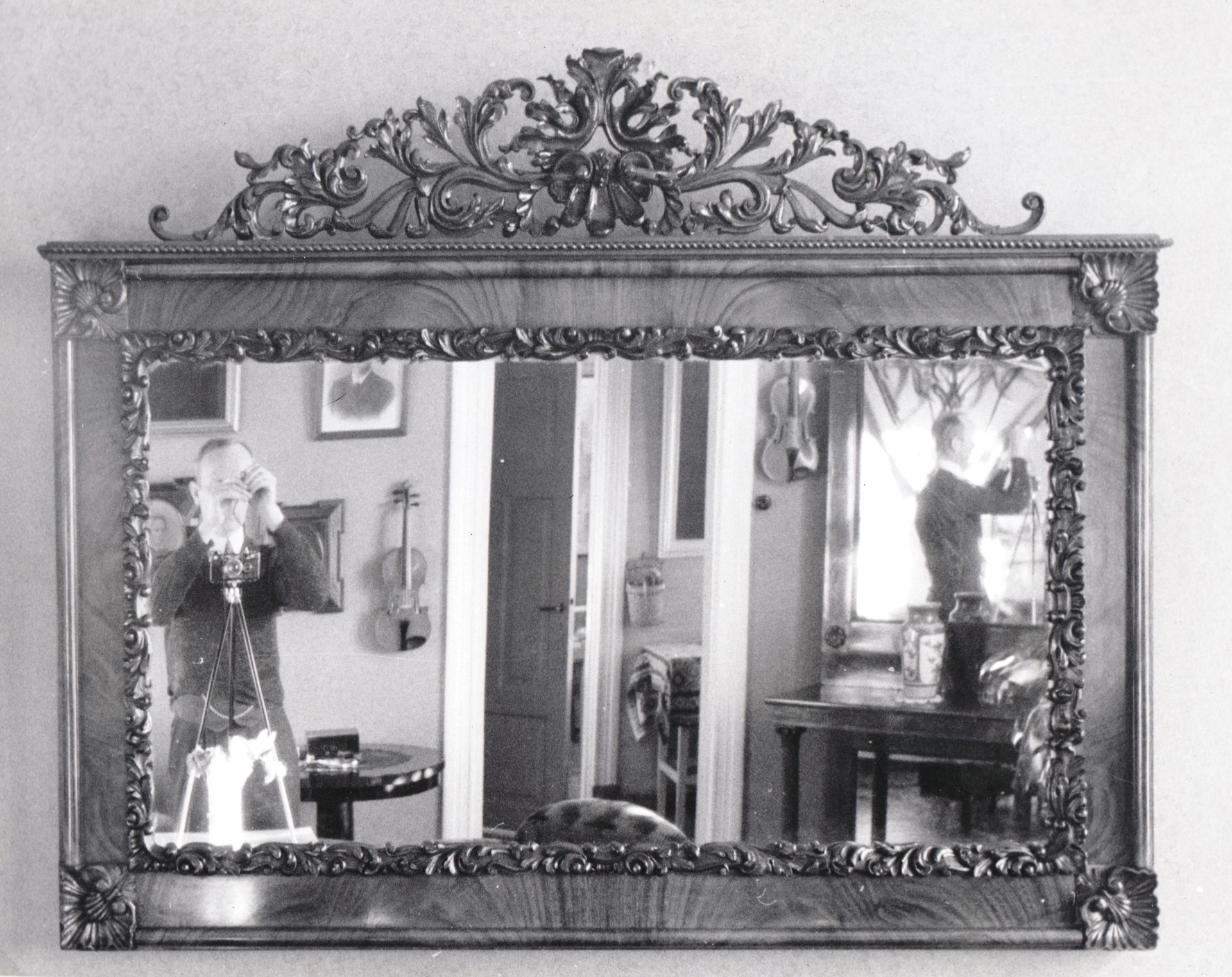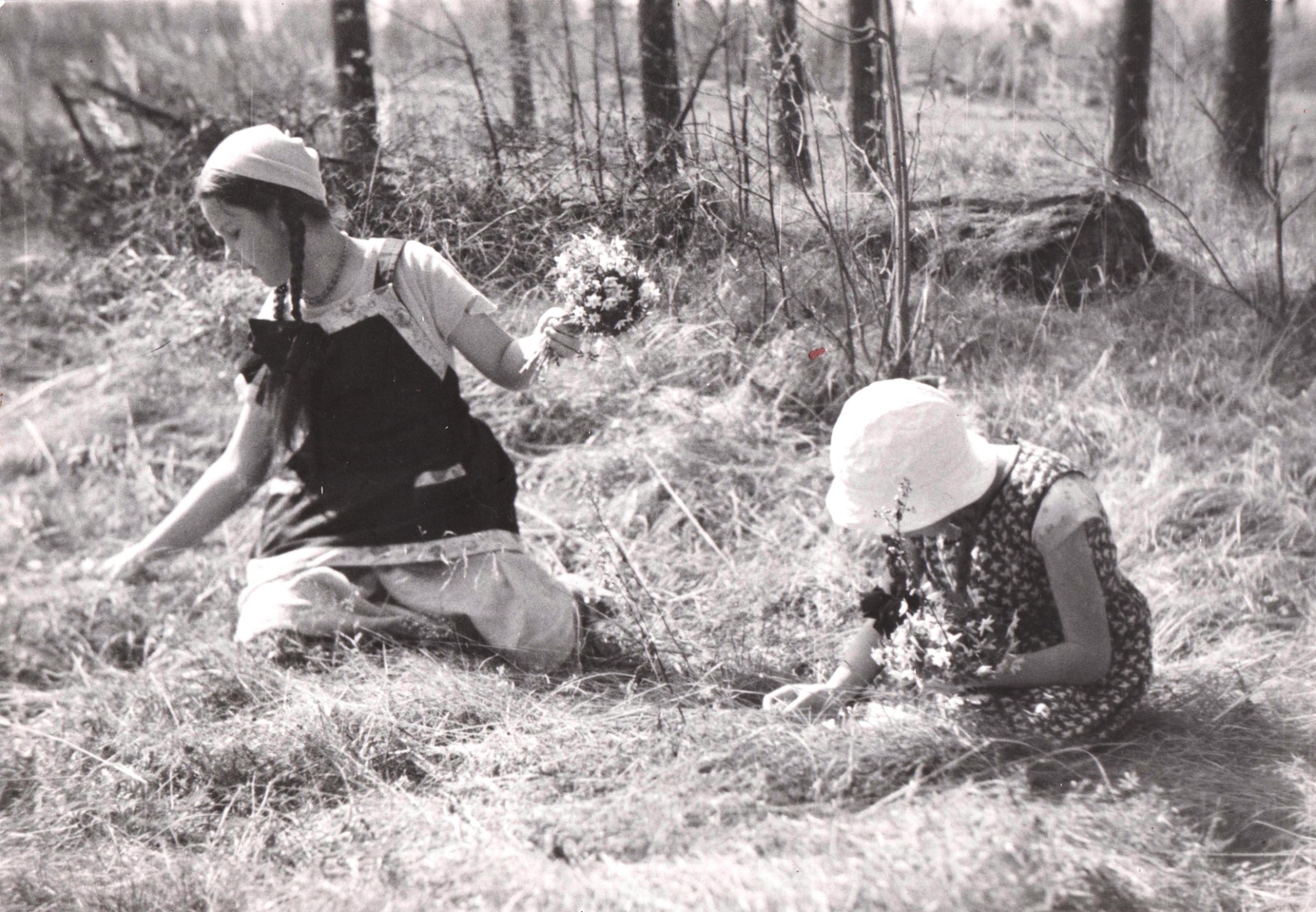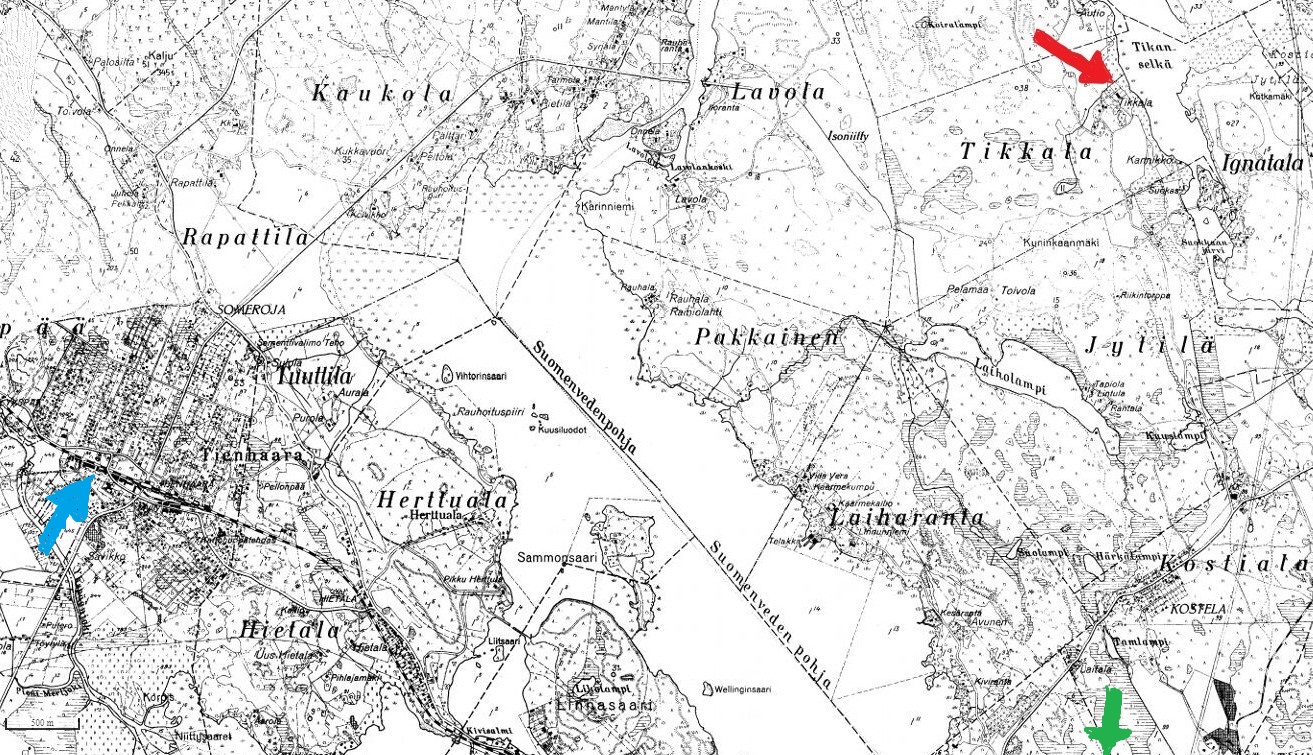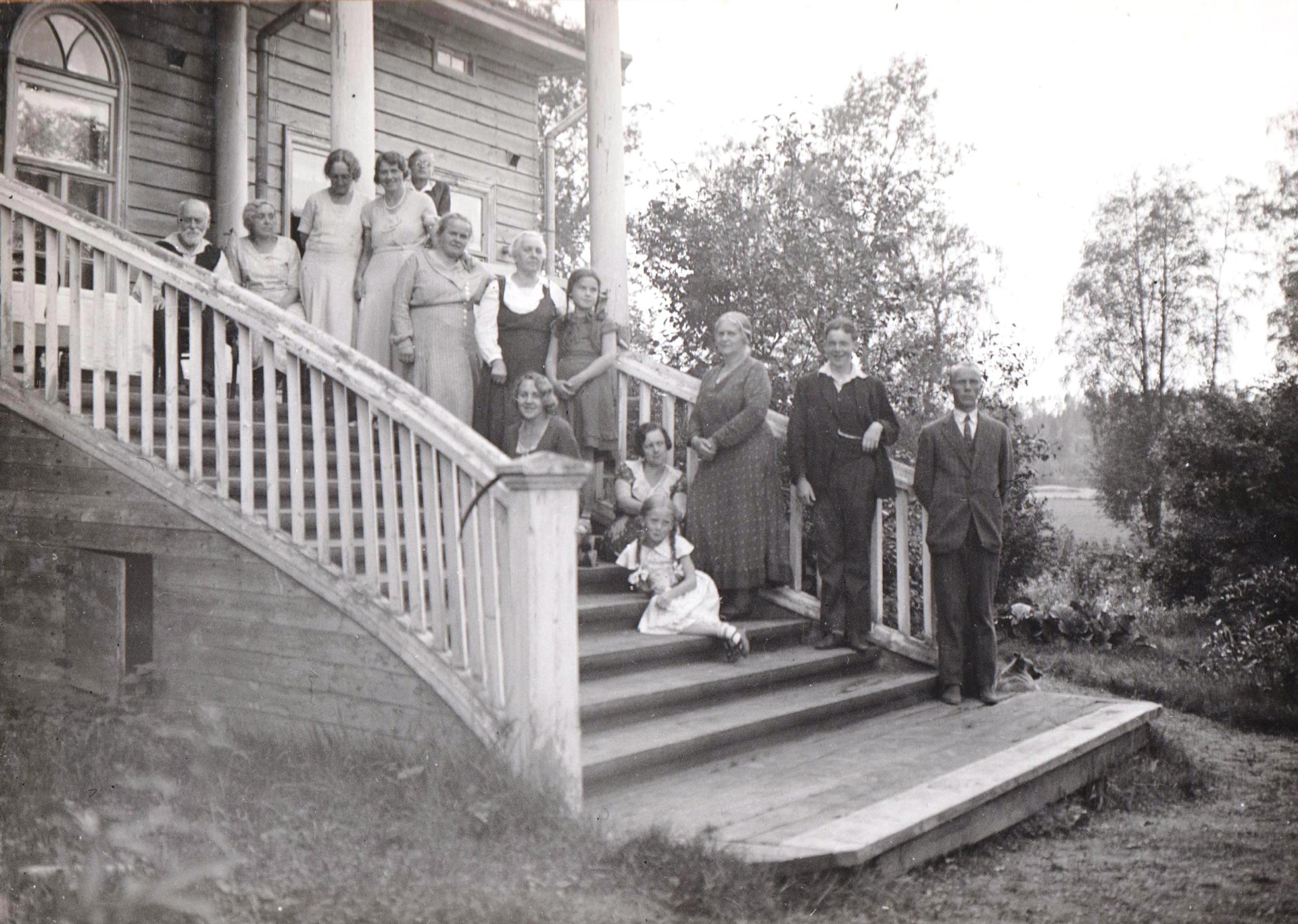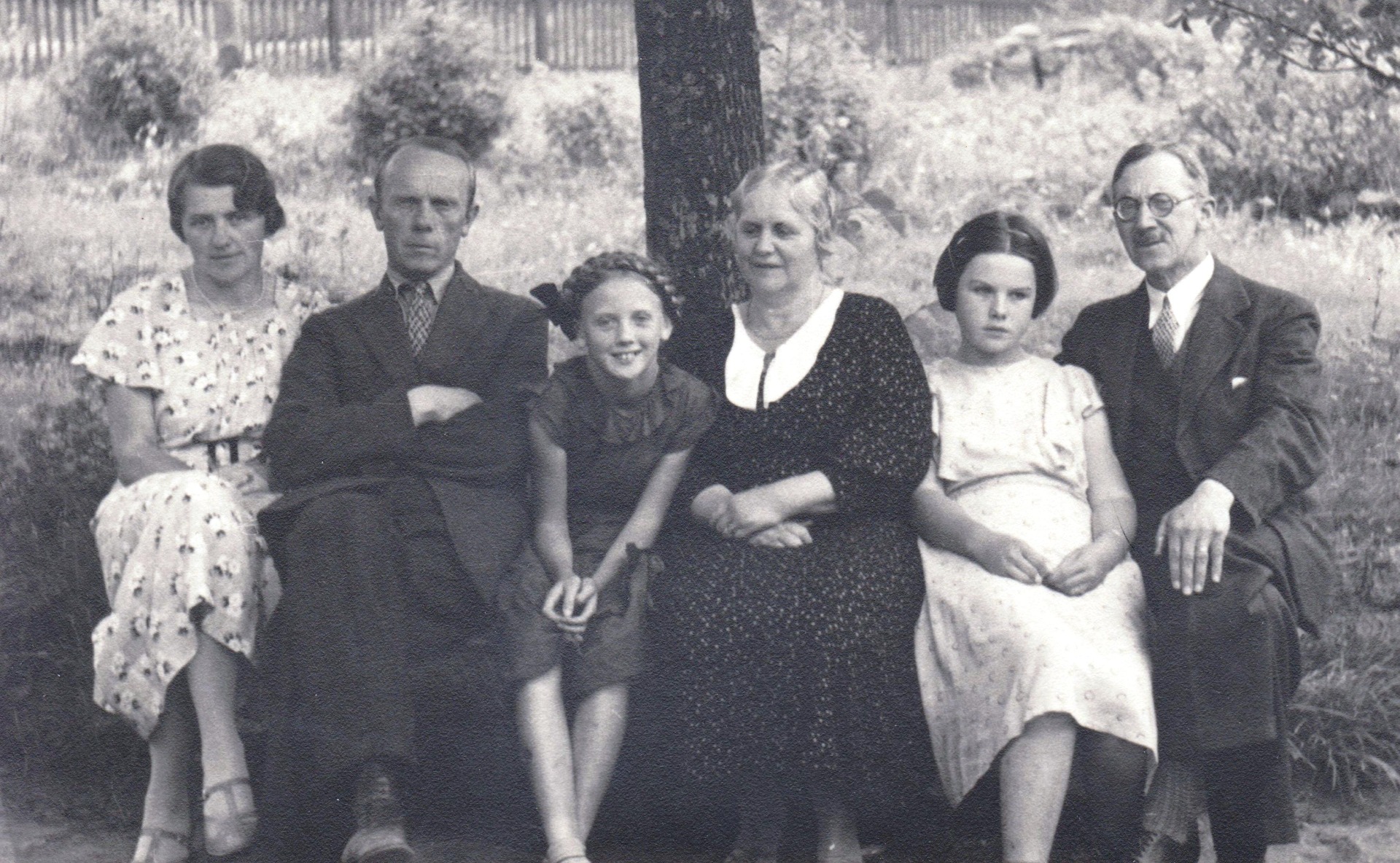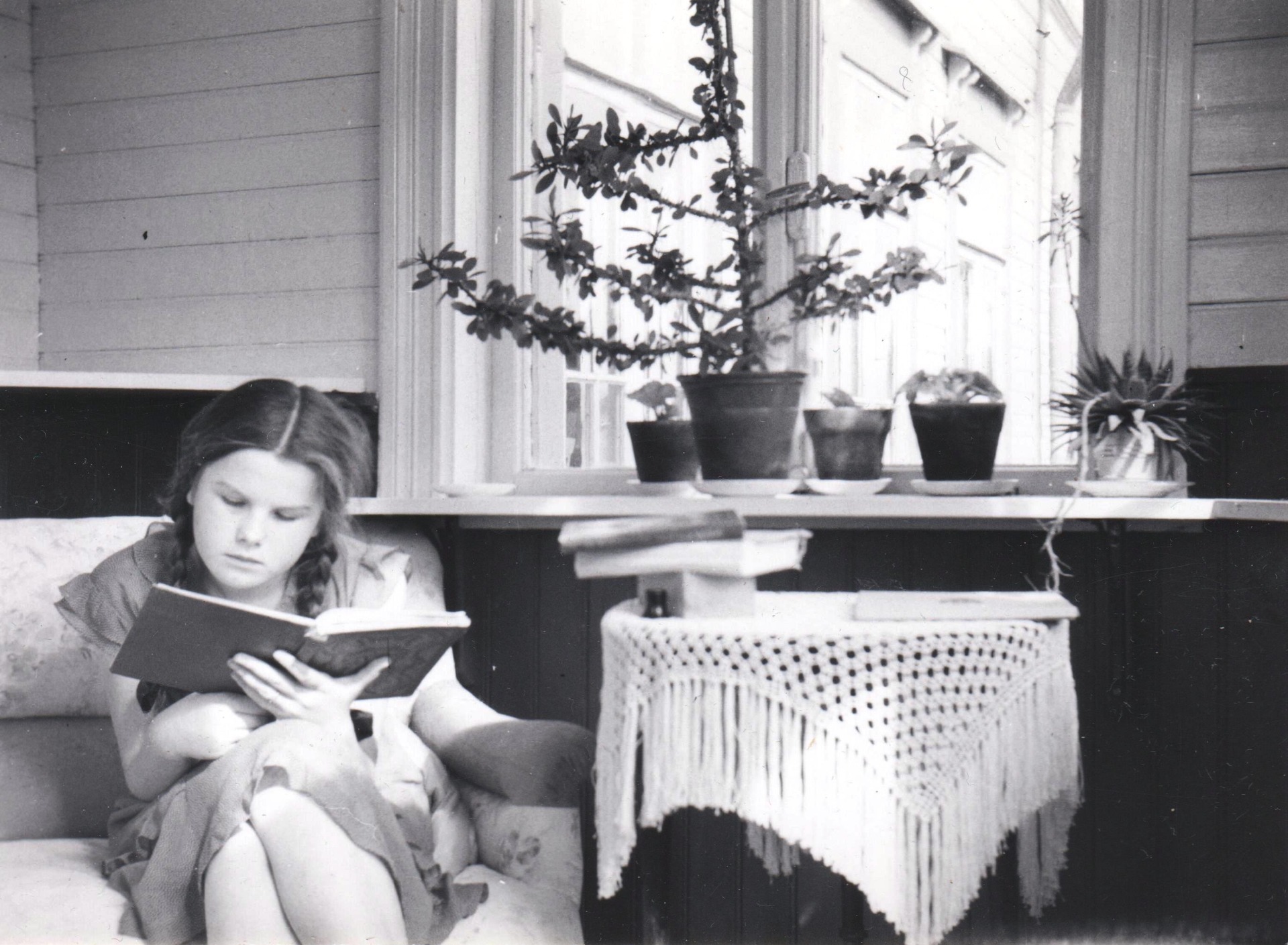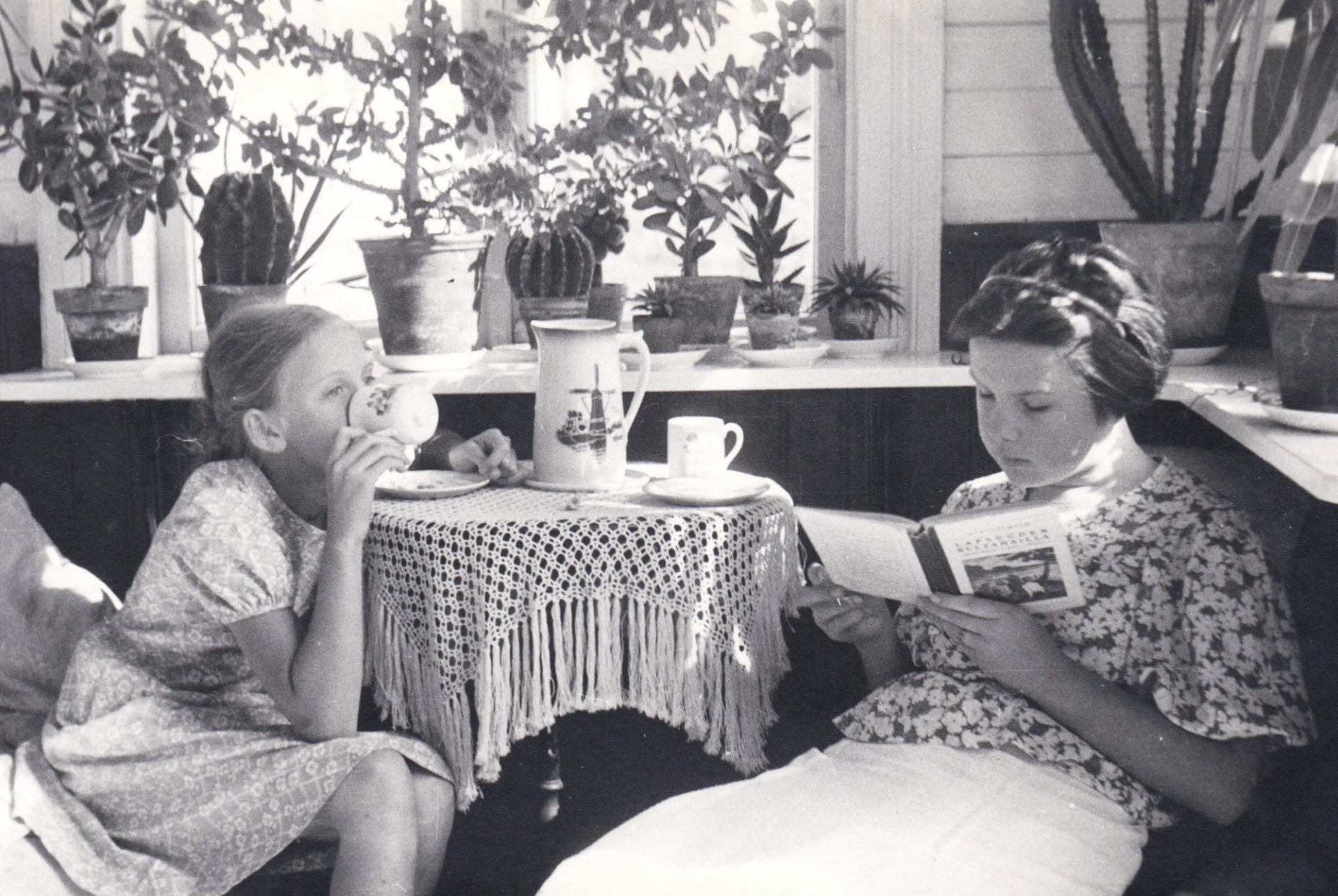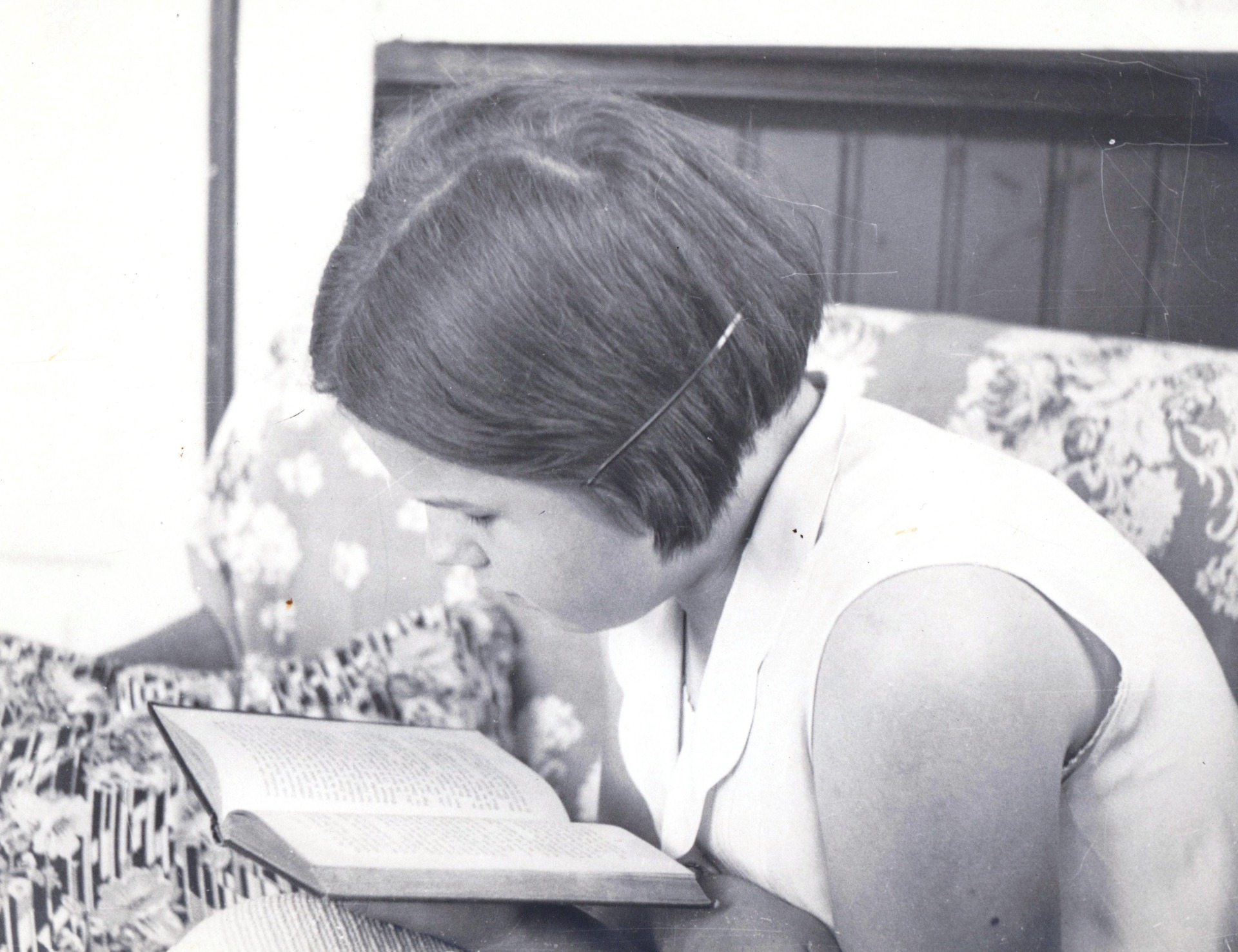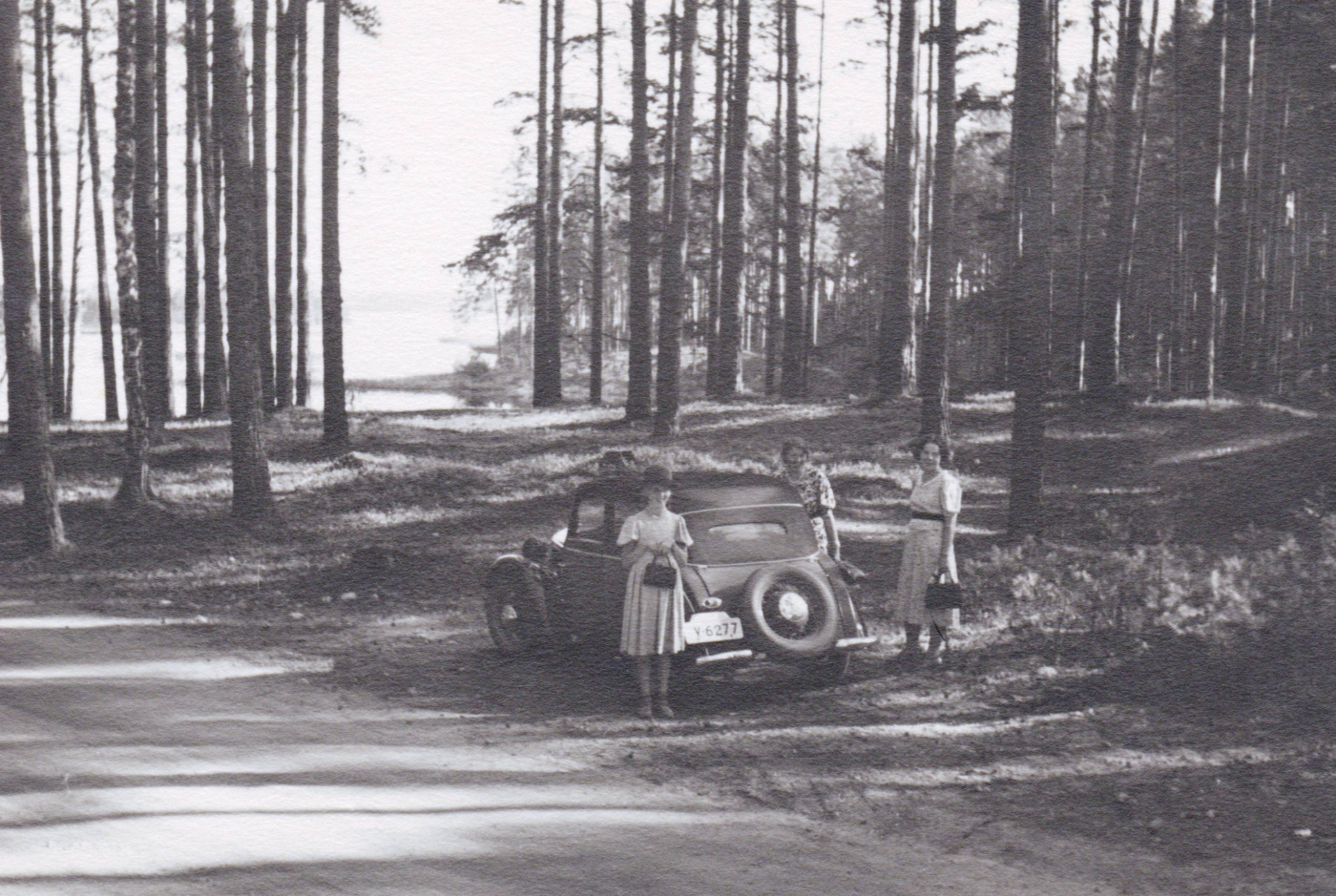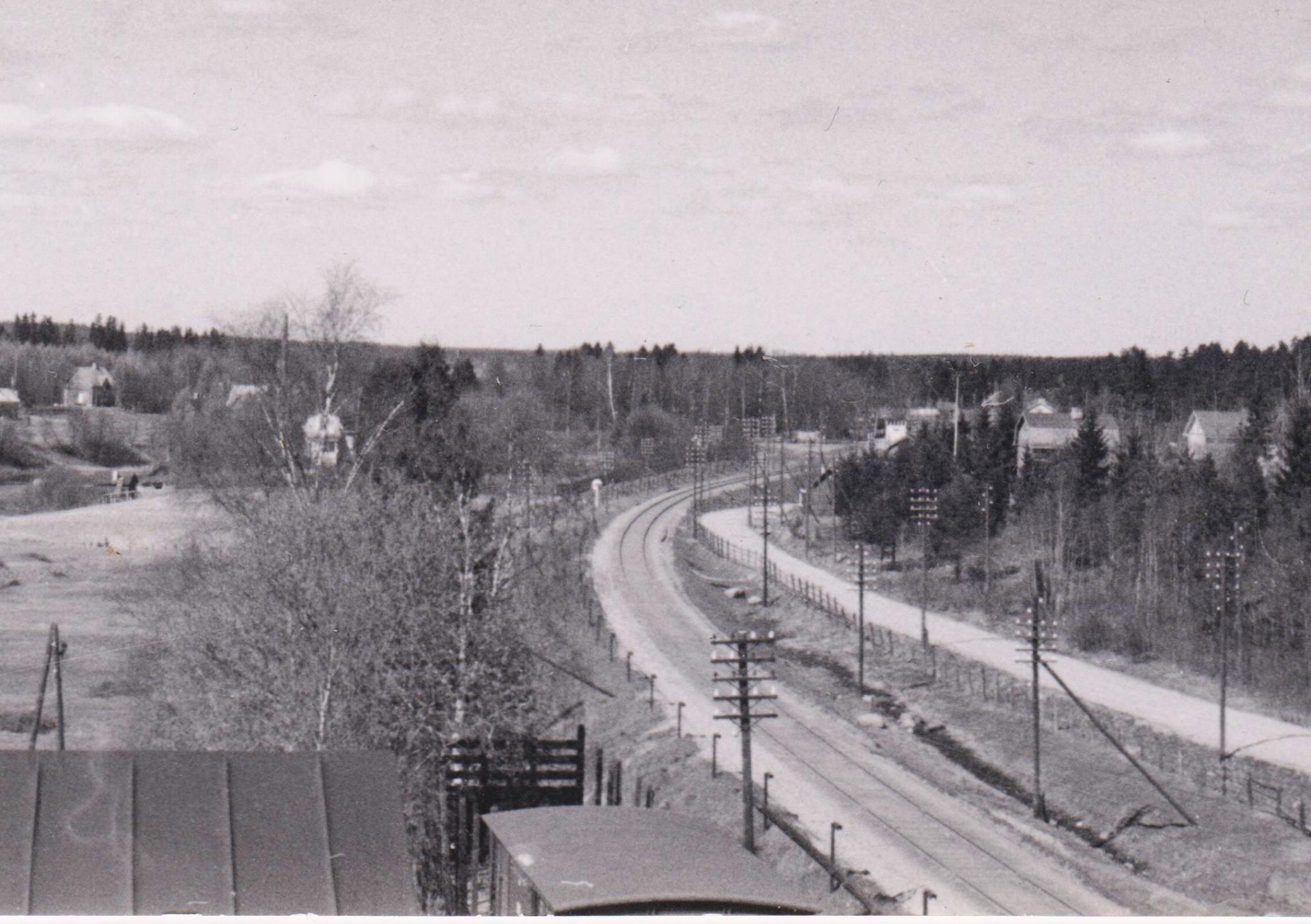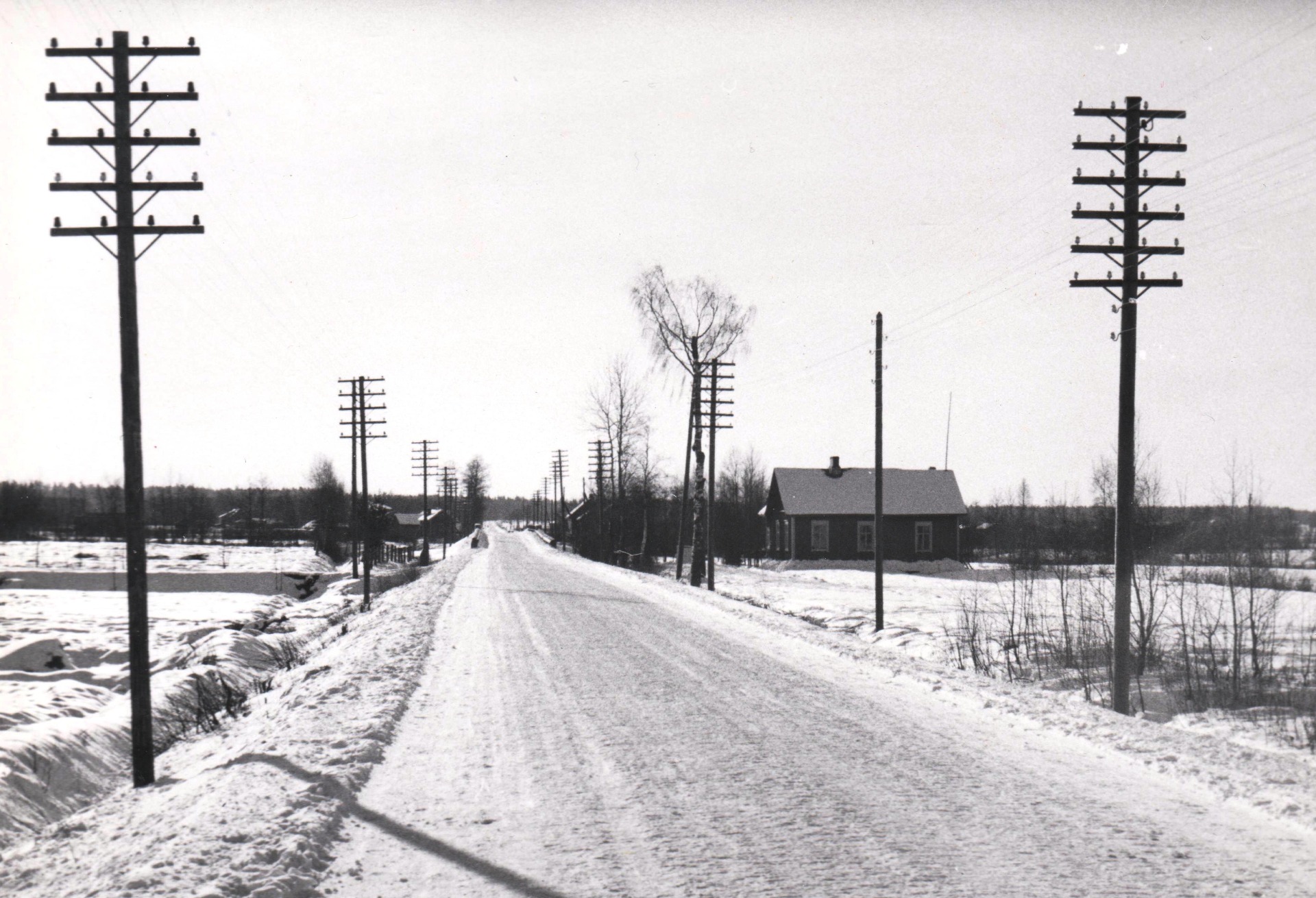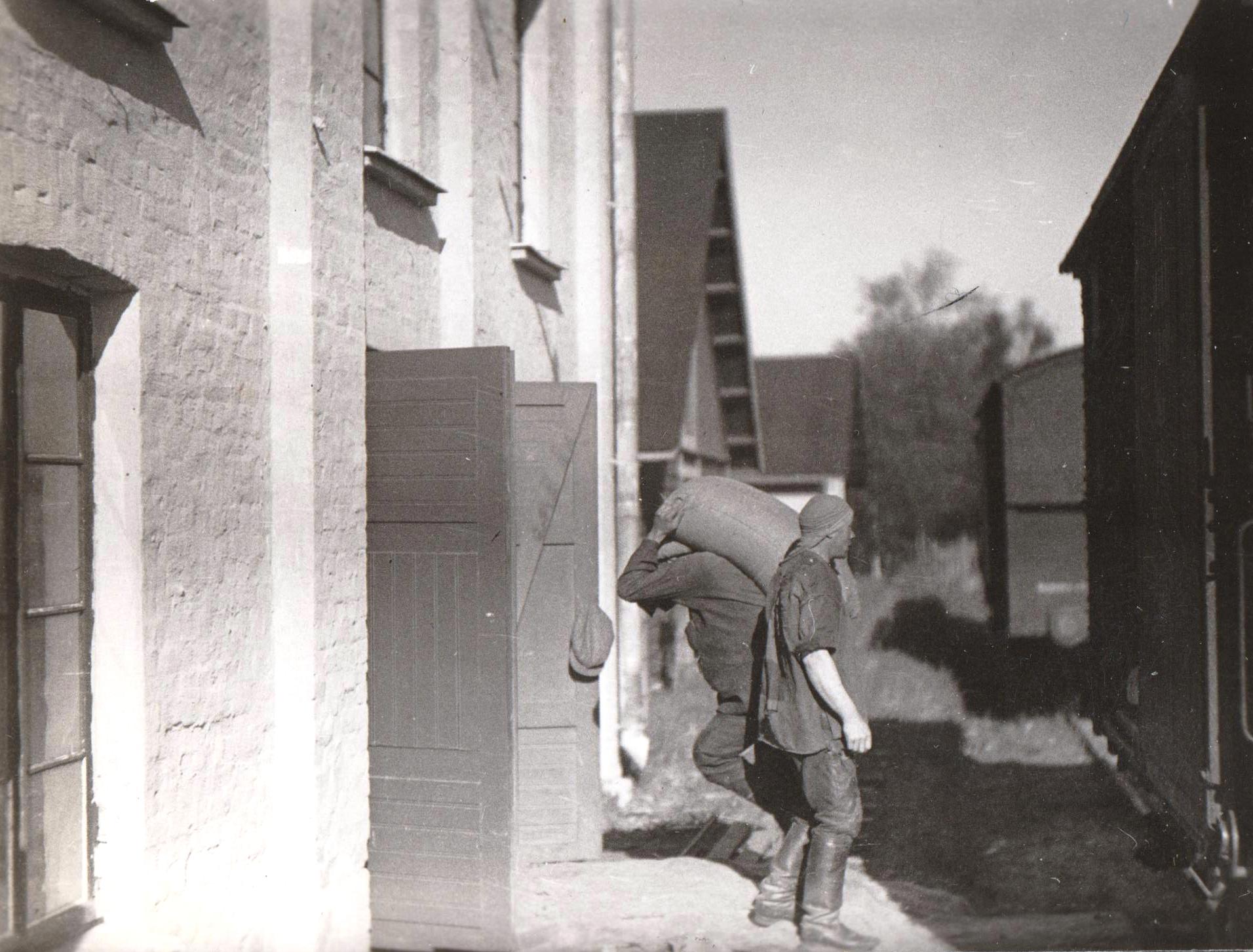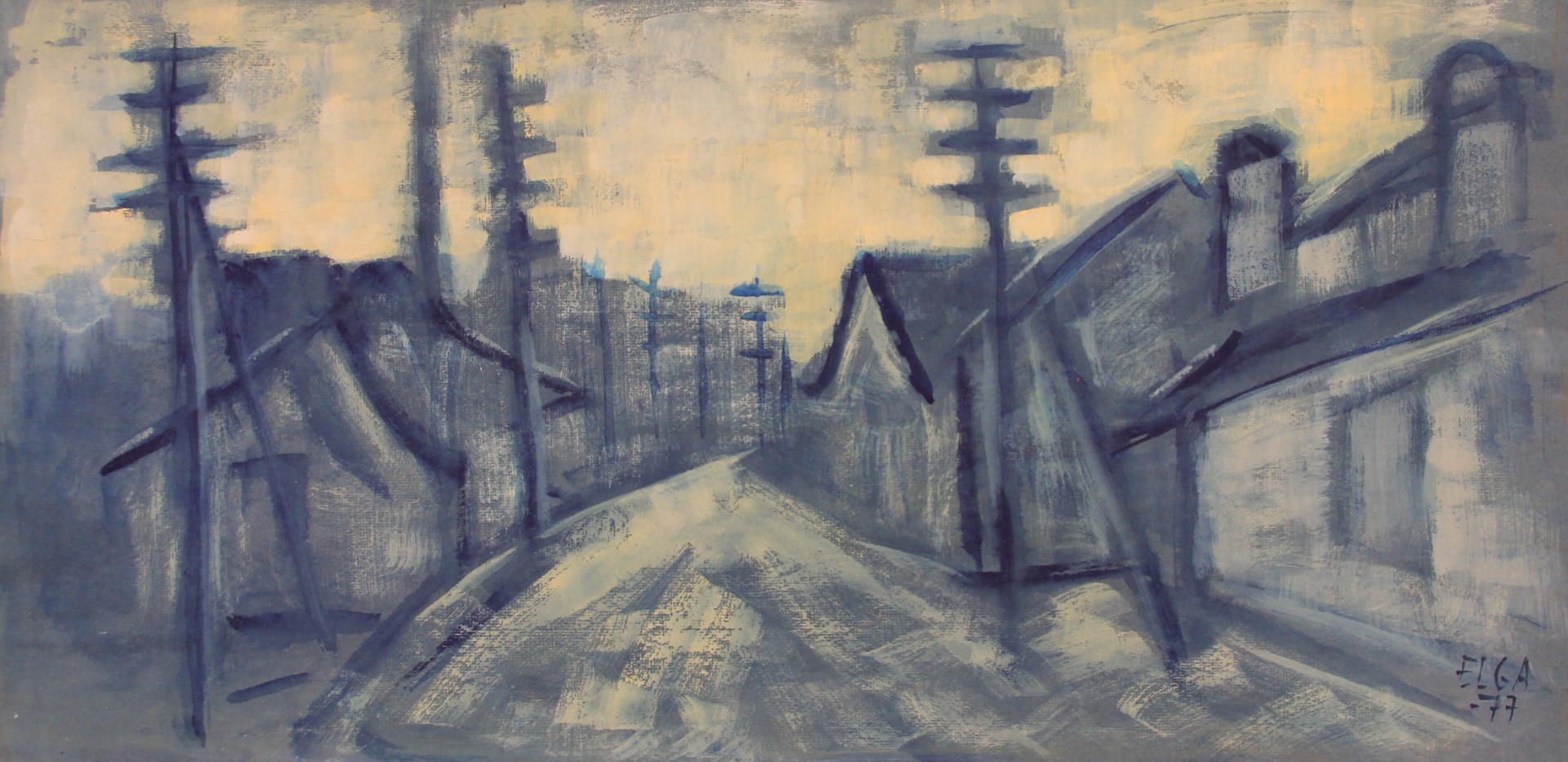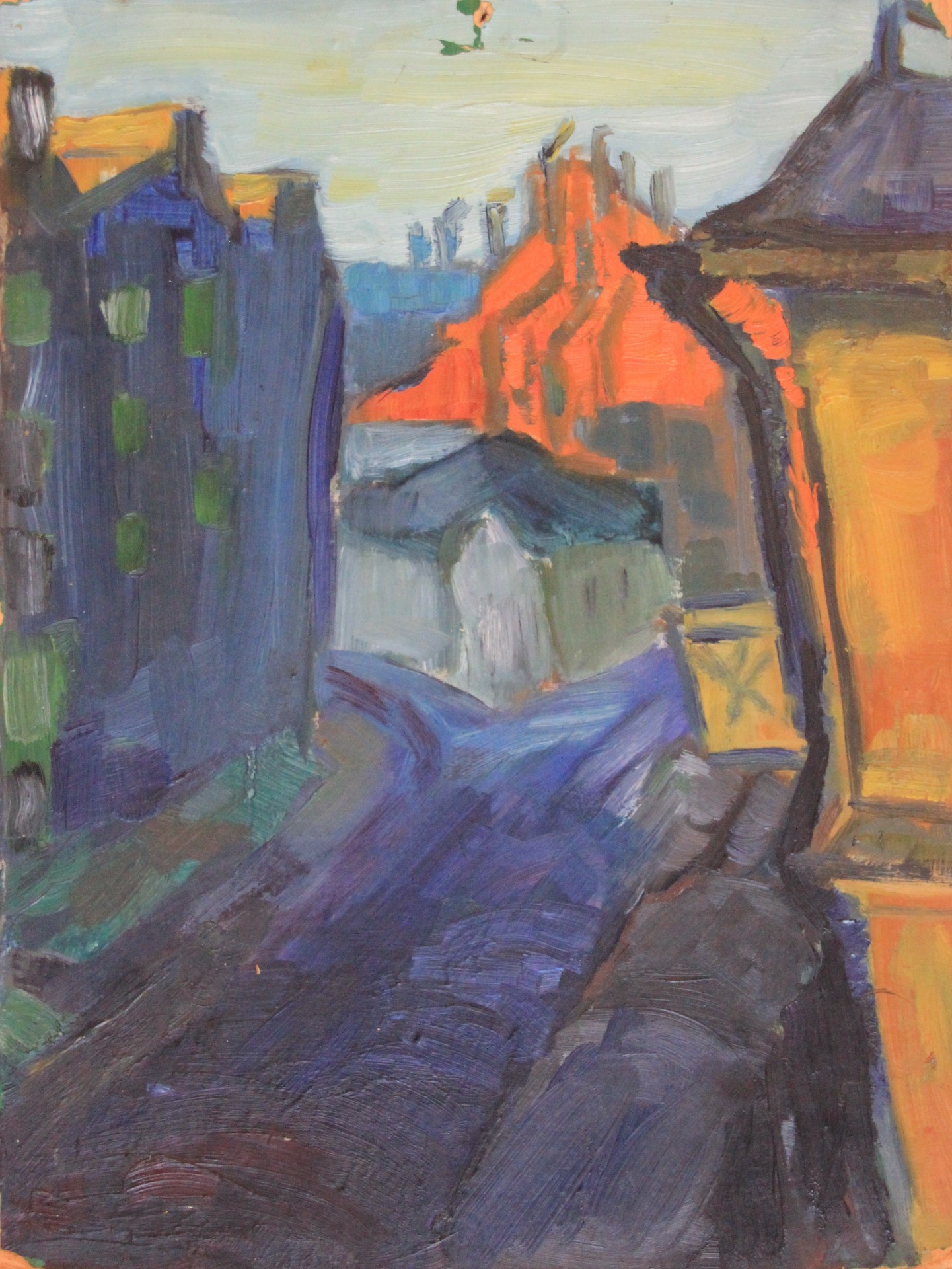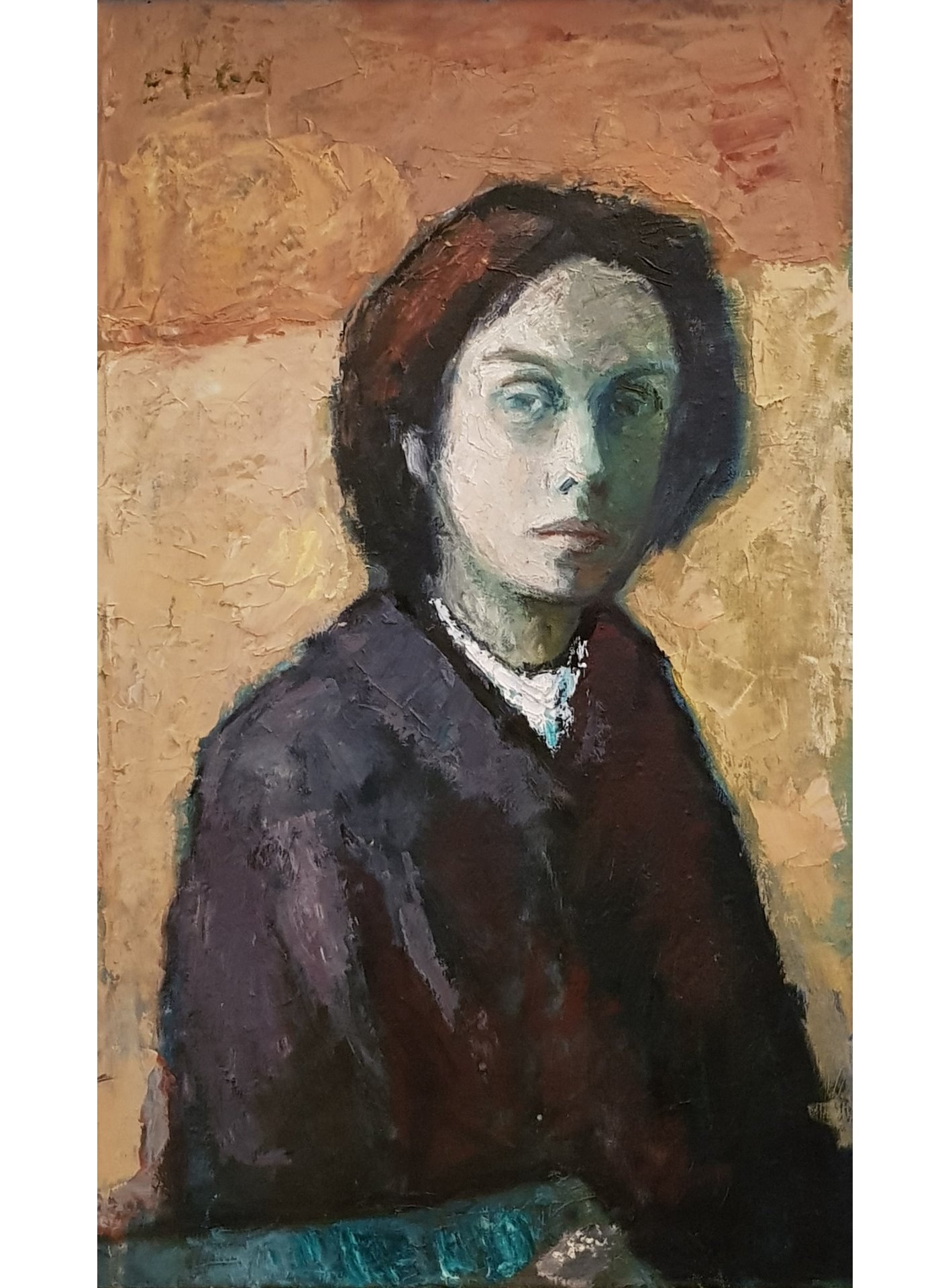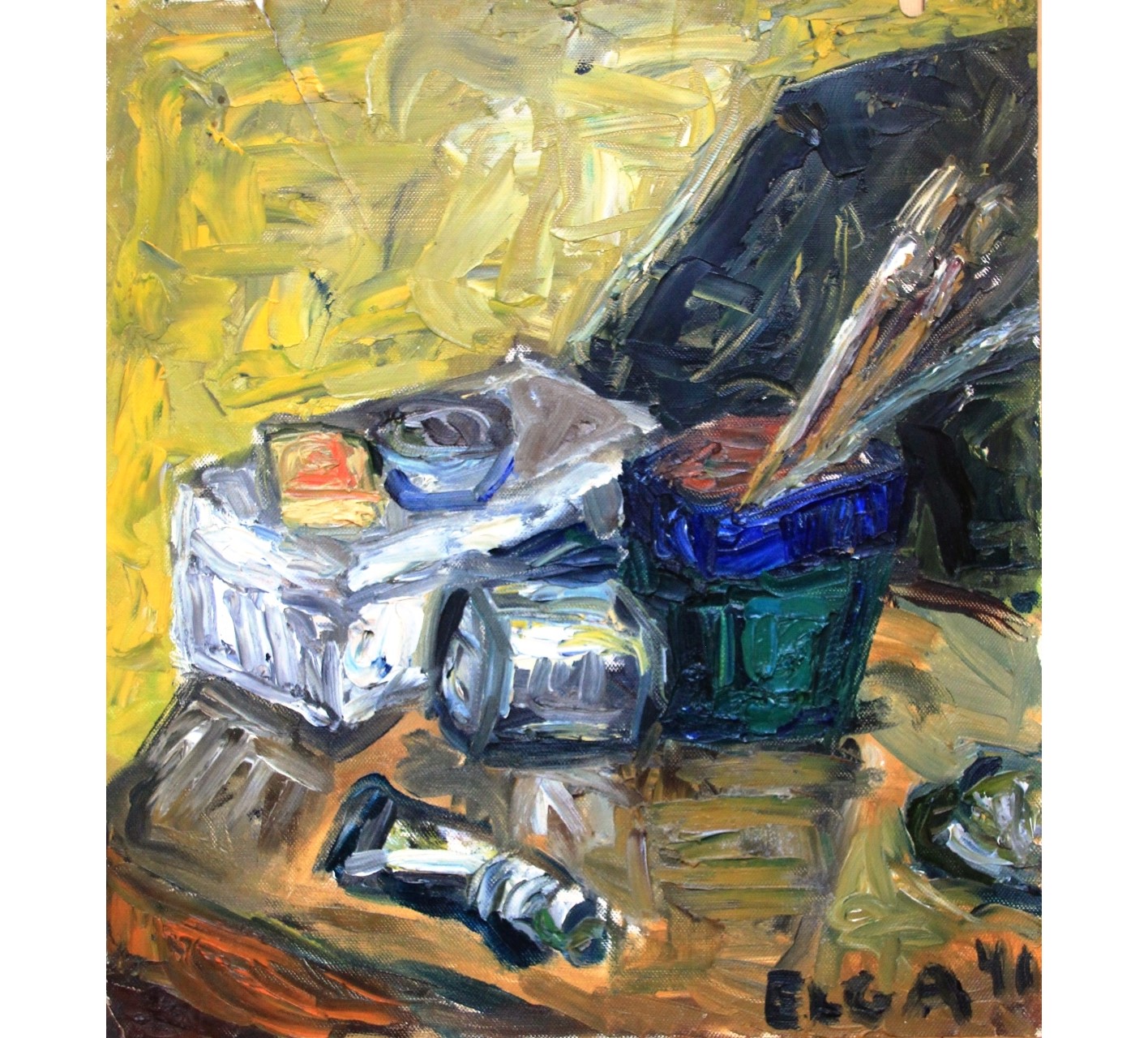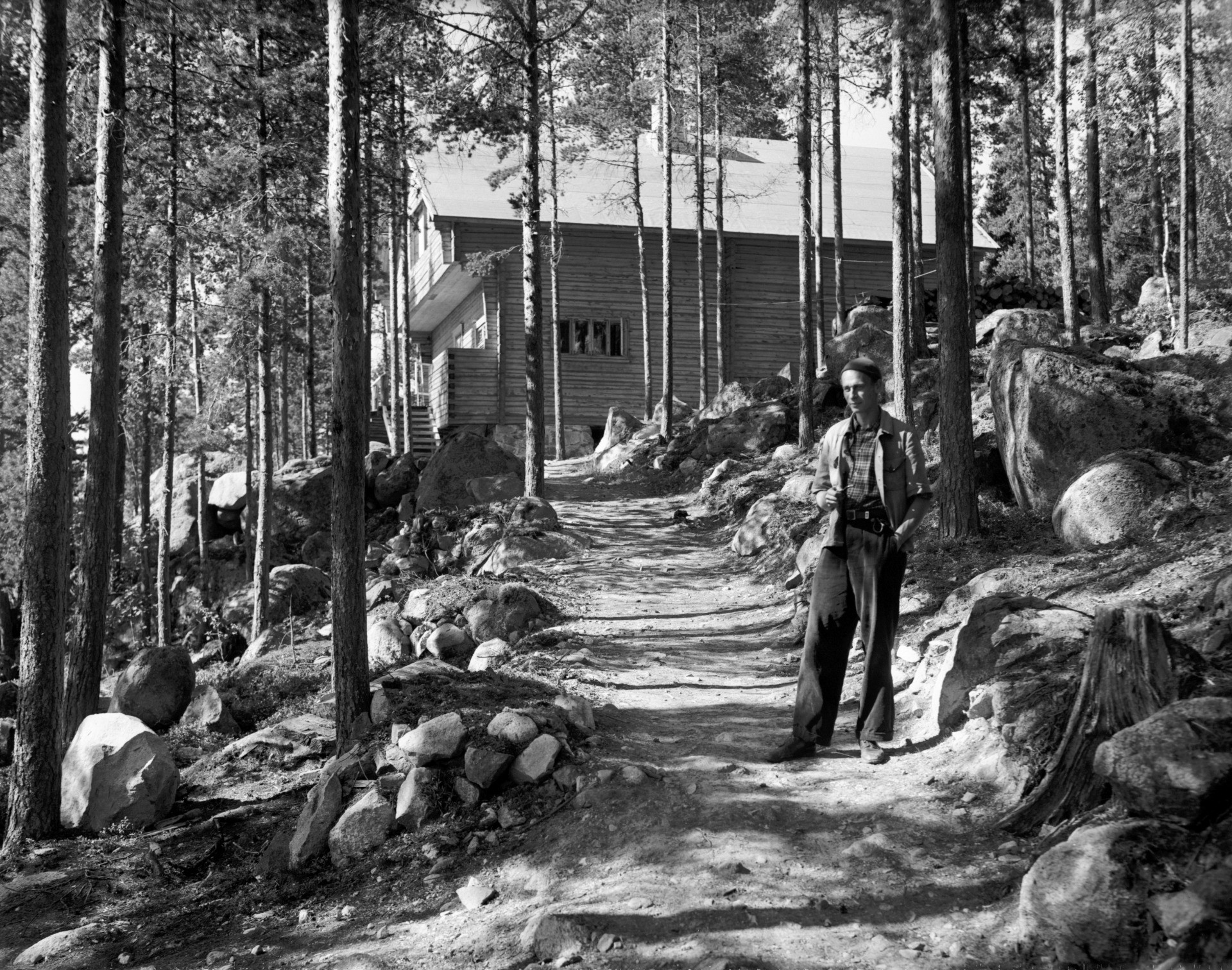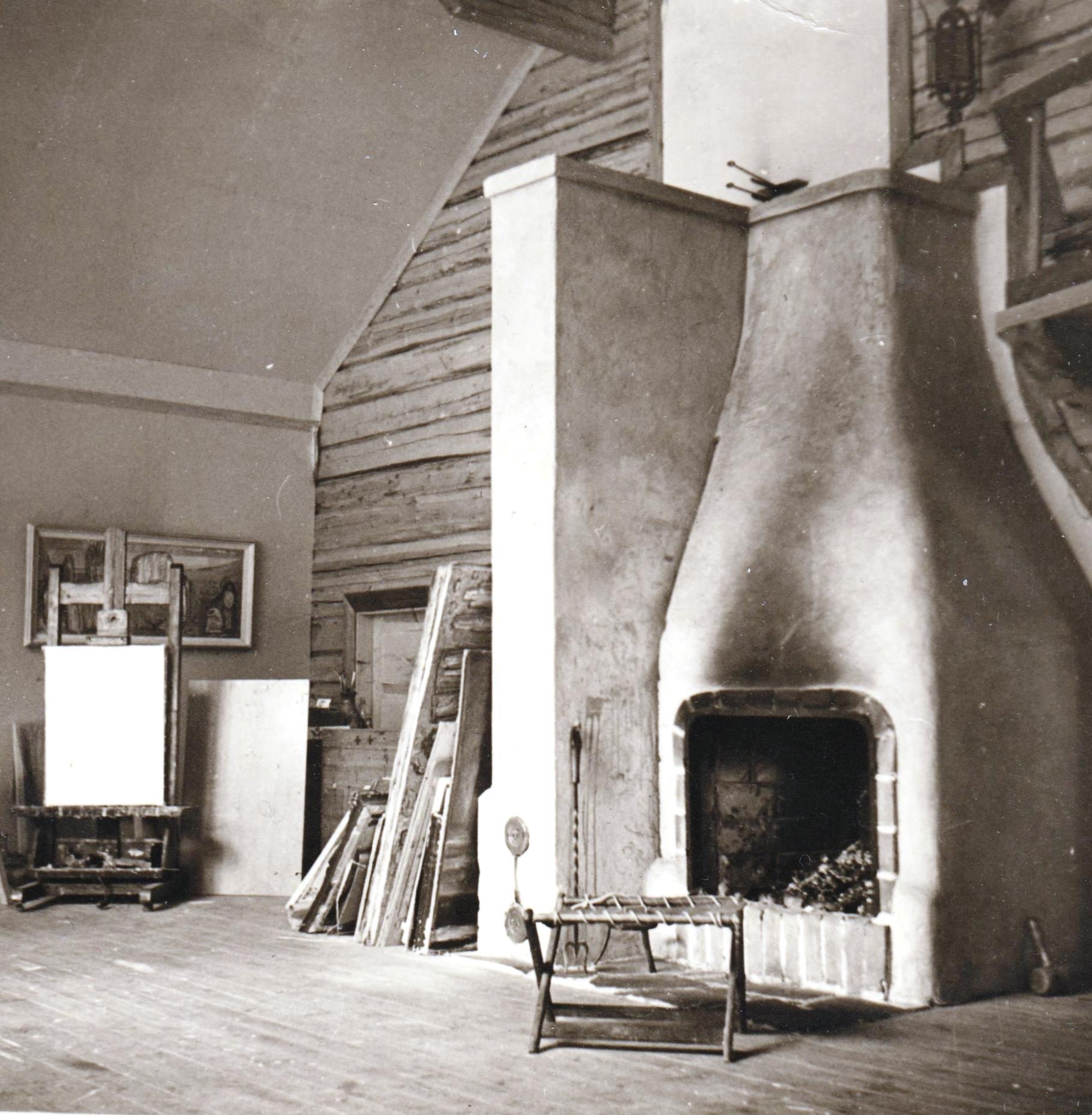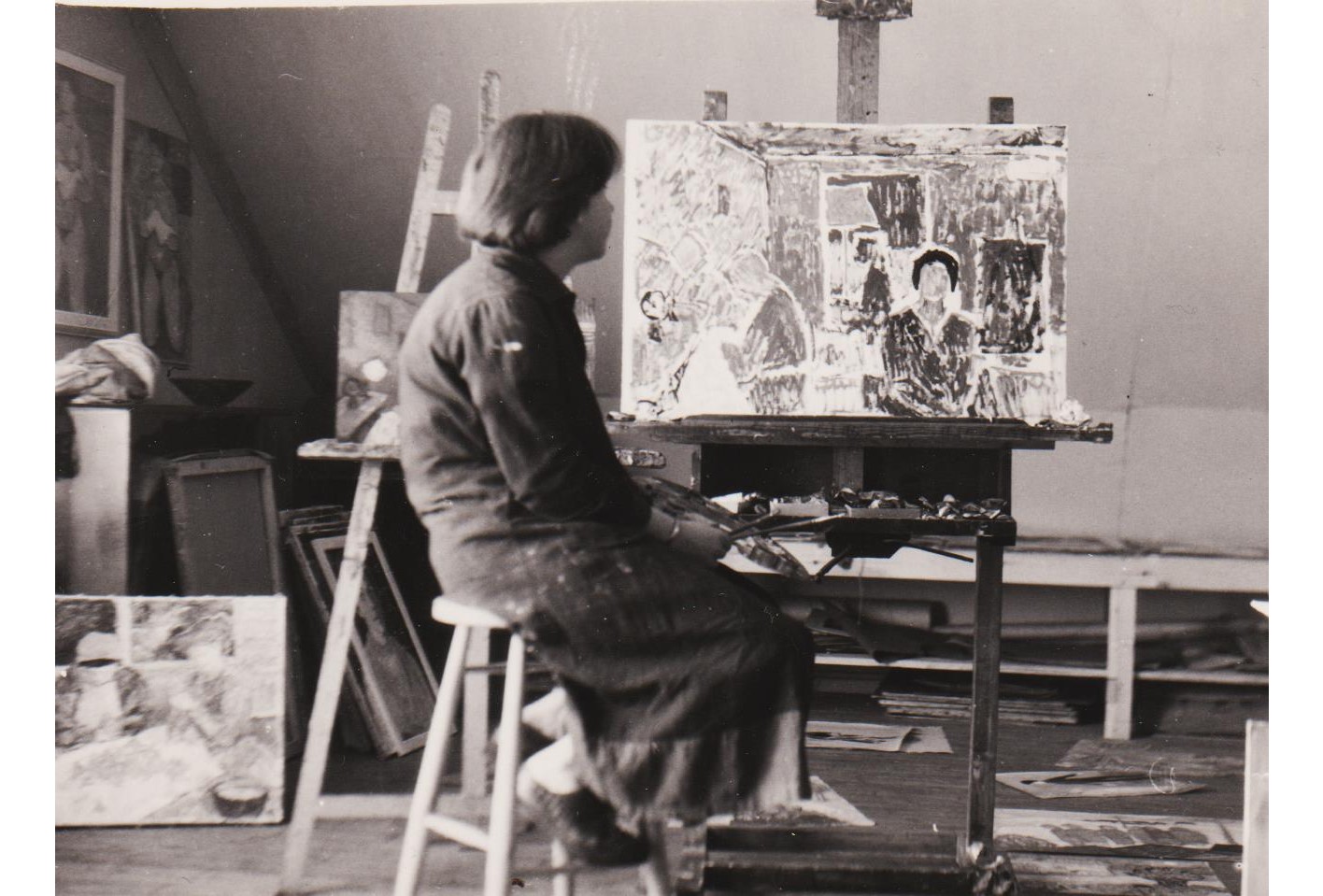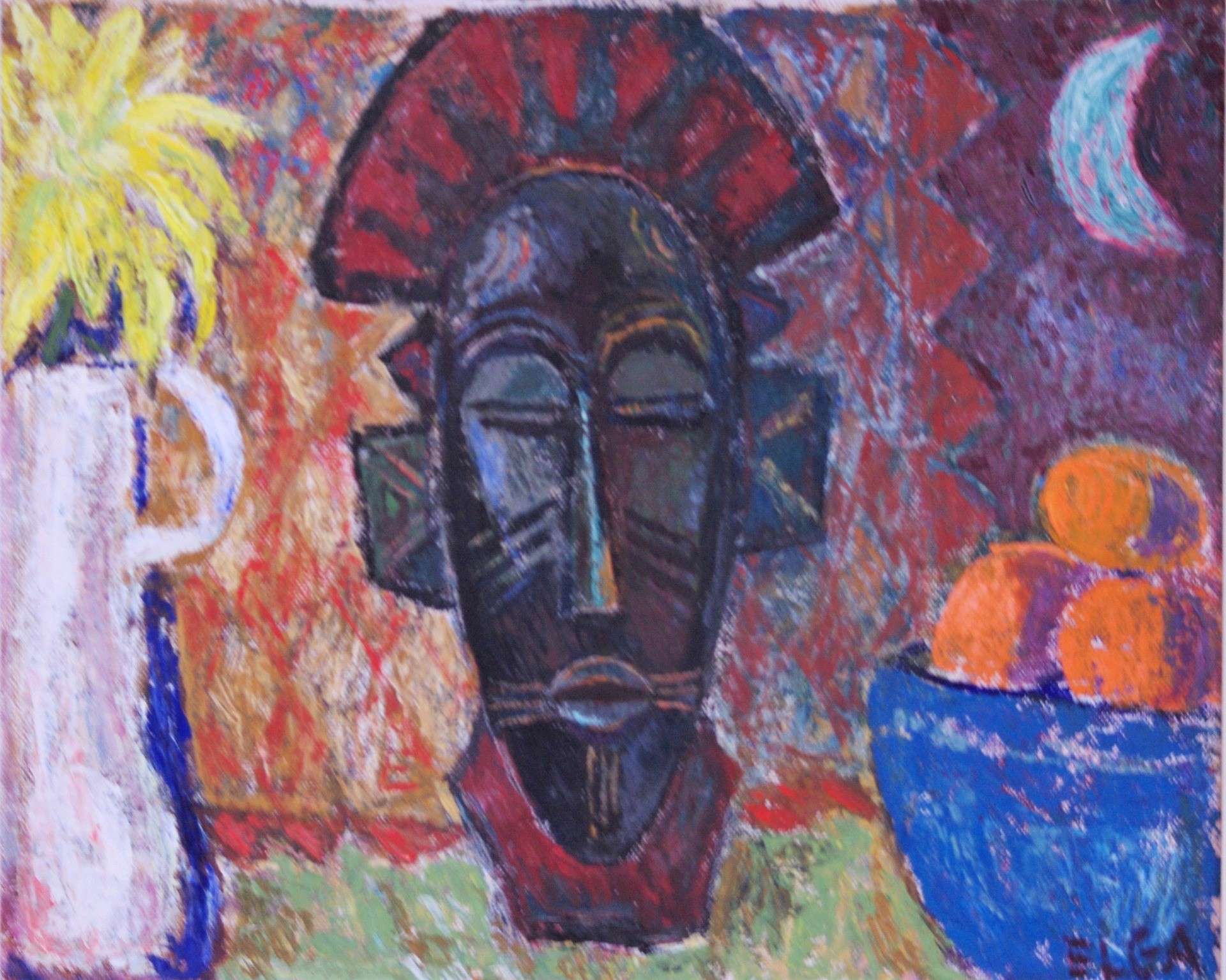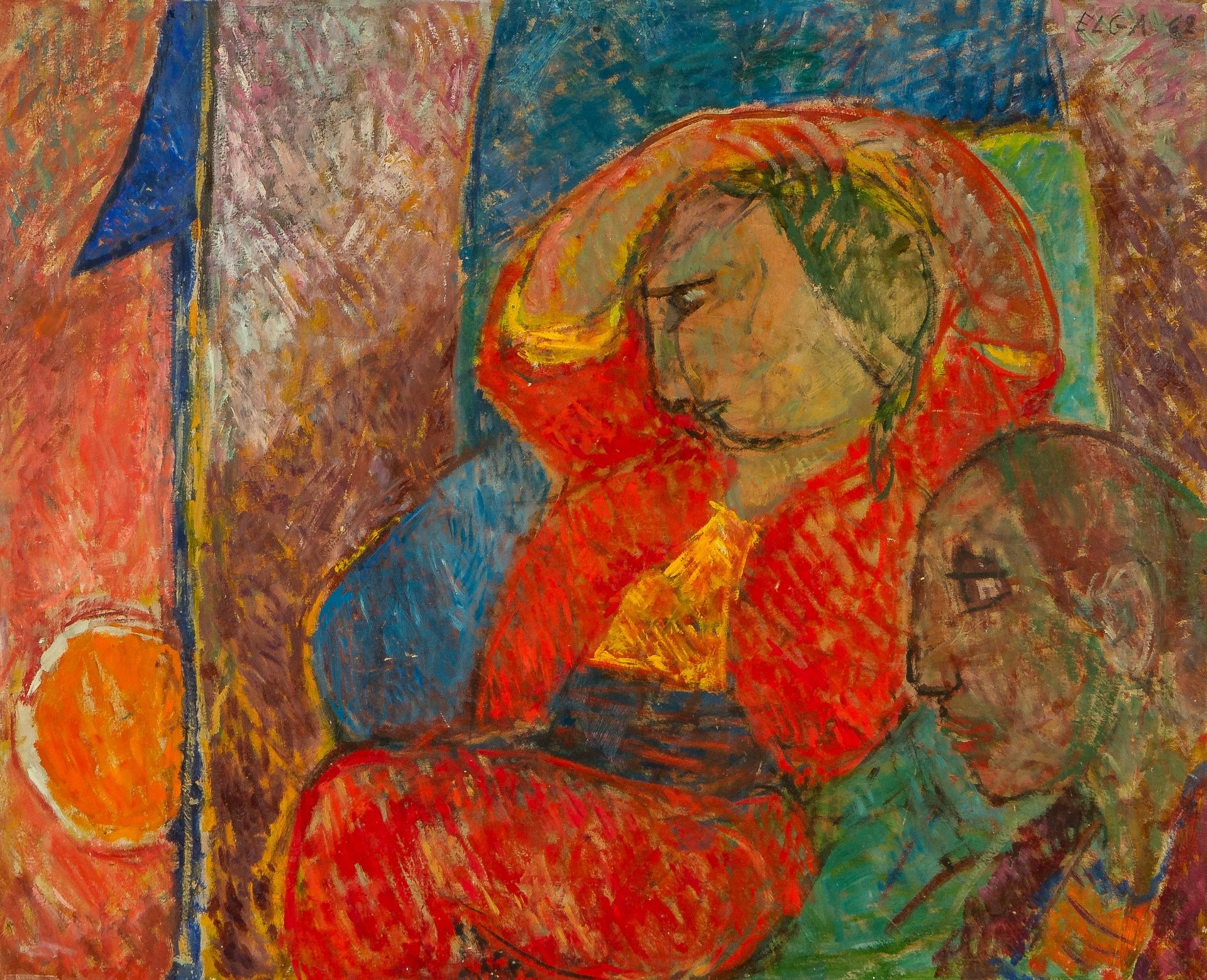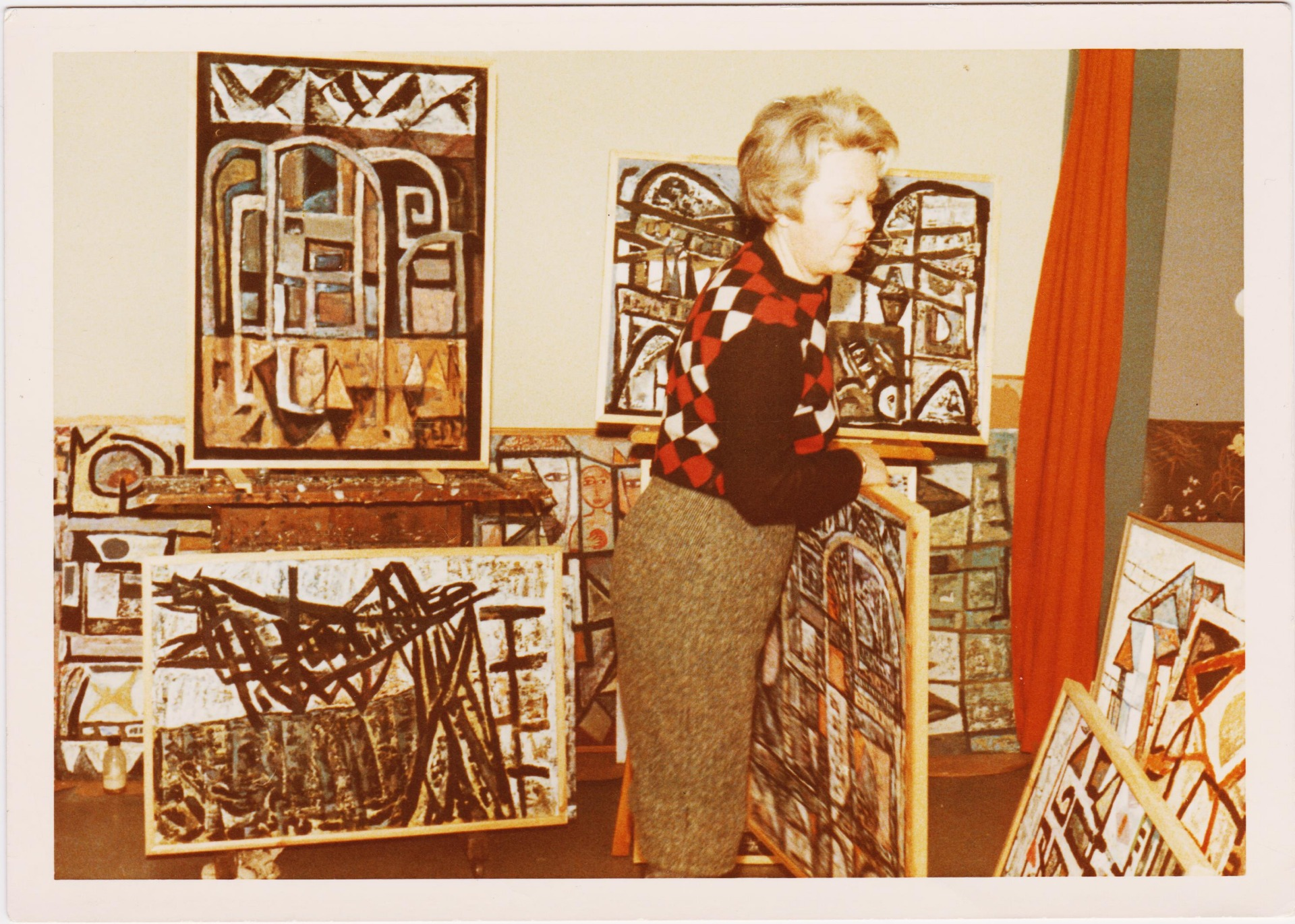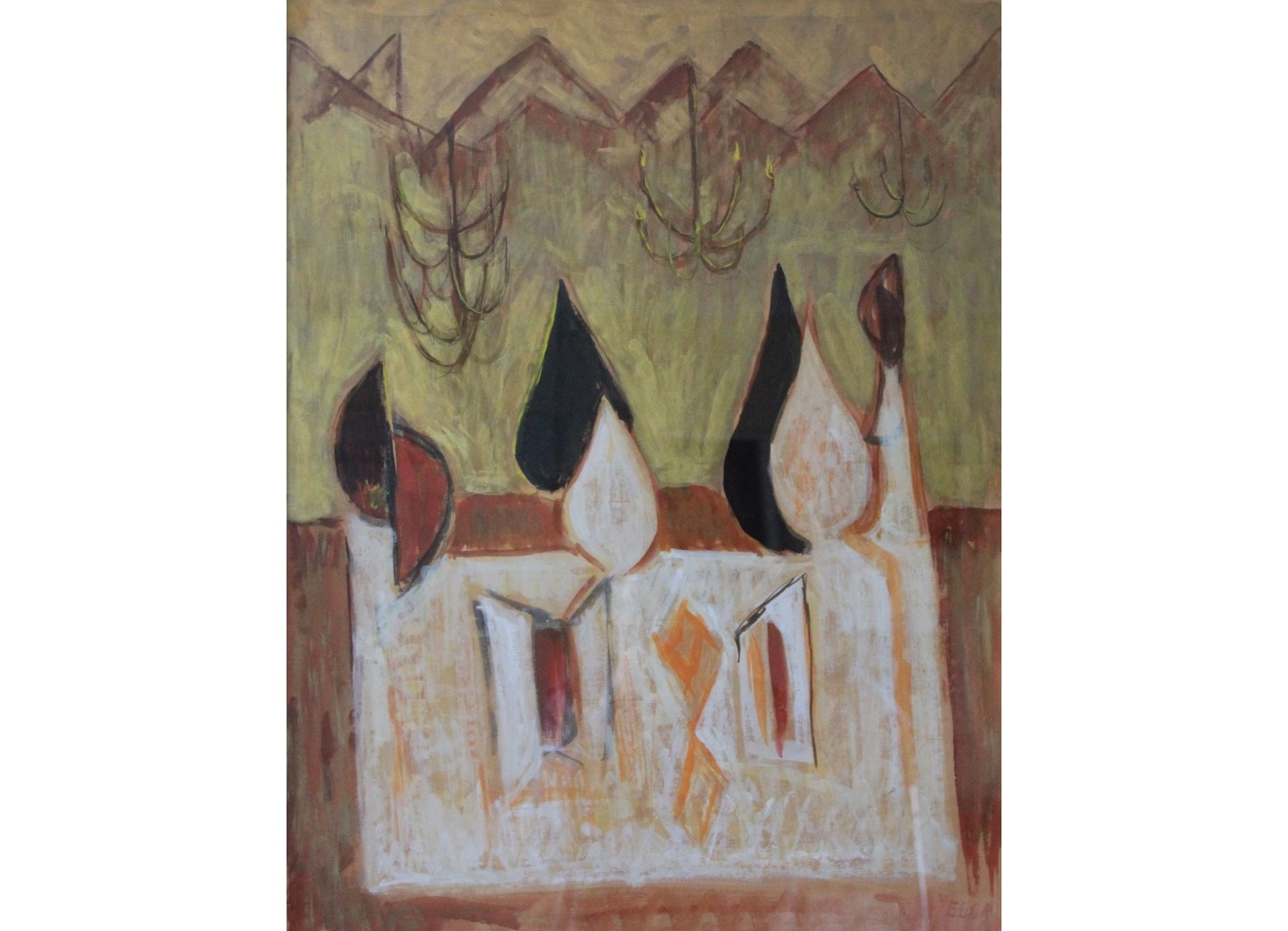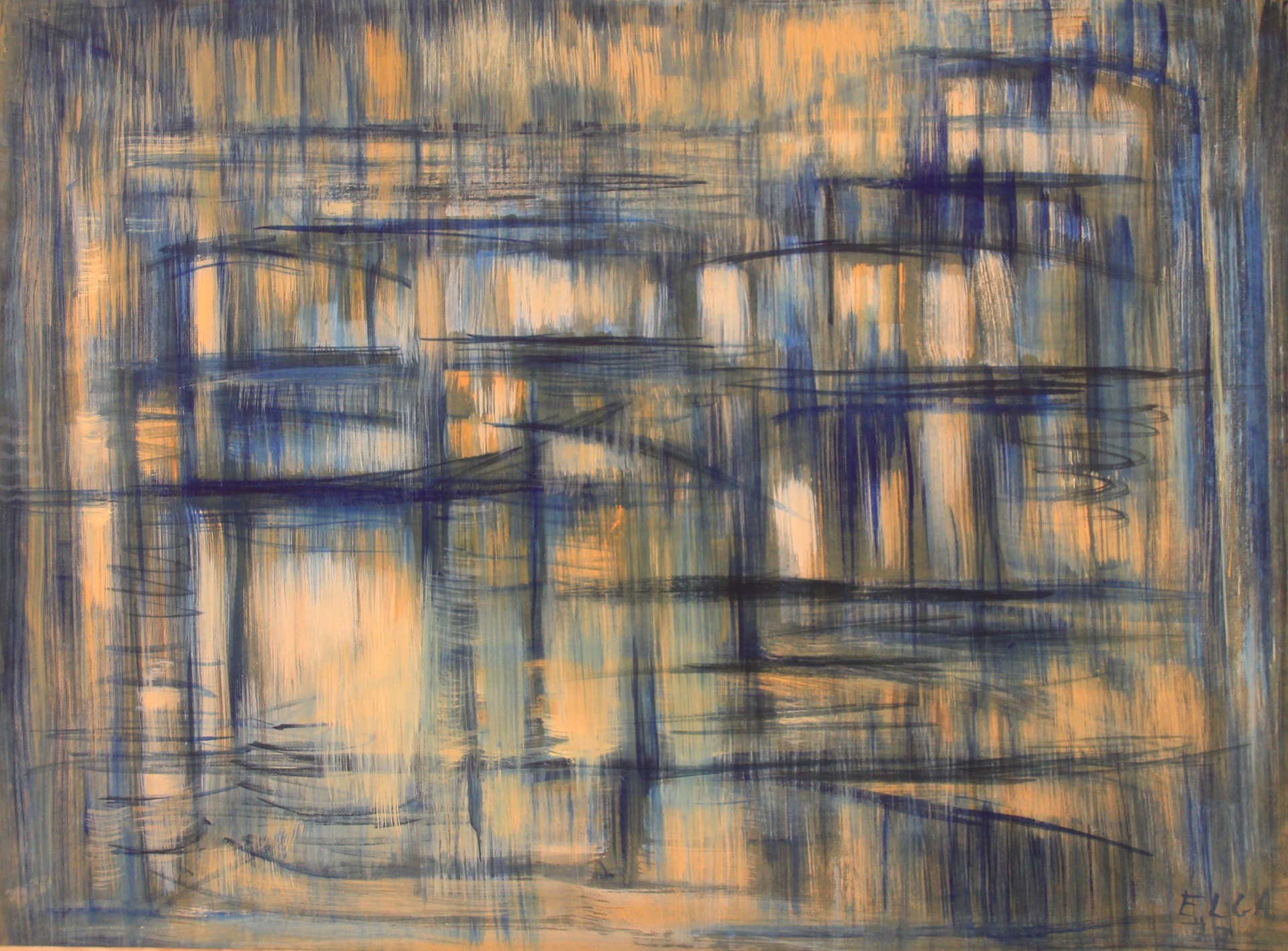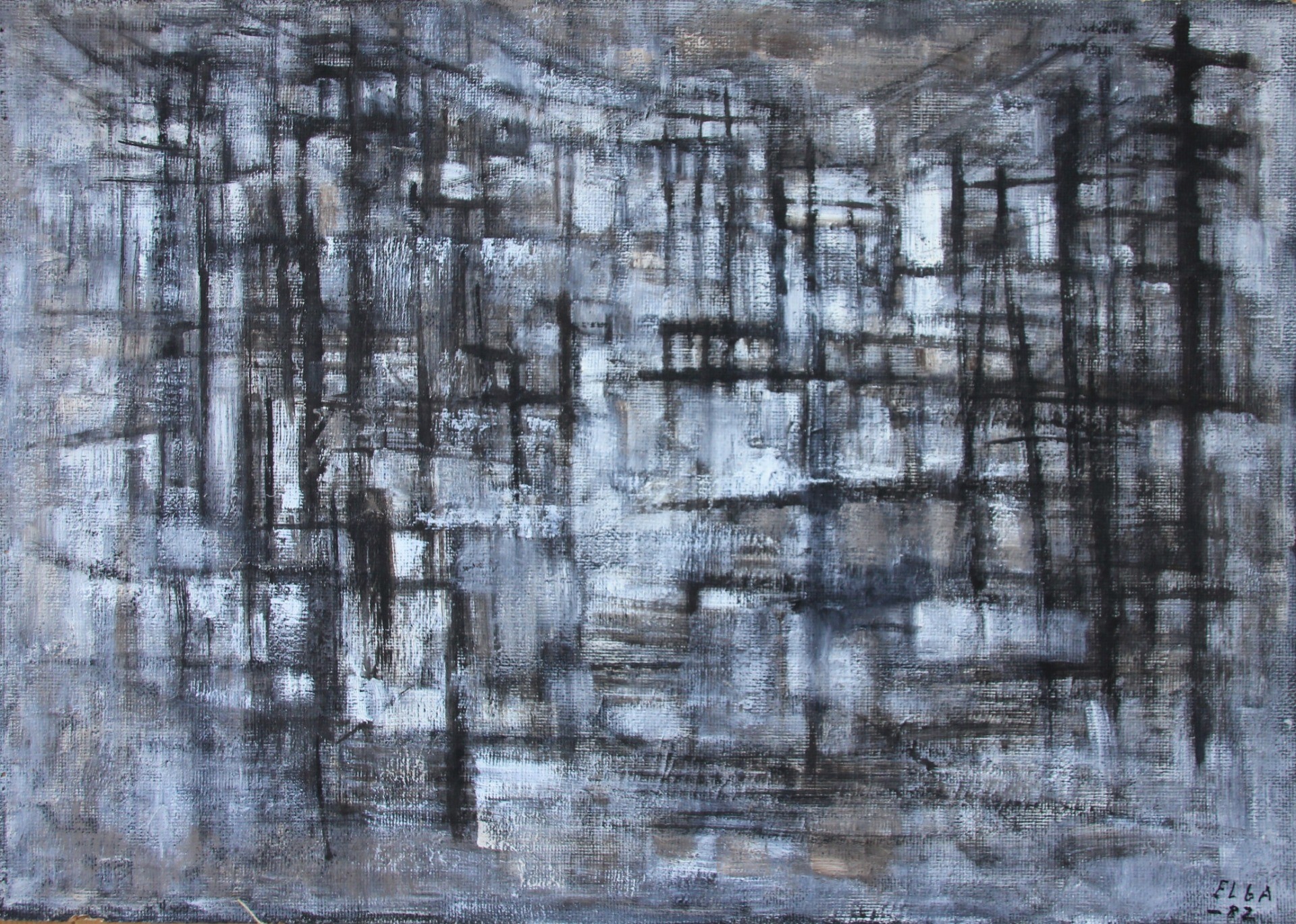Biography
We are Elga's two years younger
sister Nelly's two daughters. Although we were born and raised in Stockholm, Sweden, we
have spent a lot of time in Finland. Partly, all summer and Christmas holidays
in our father's apartment in Helsinki, in which Elga lived during the winter
months from 1964. Partly in Elga's house in Ruovesi for a few weeks every
summer, from the early 1960s and onwards.
We are Swedish-speaking, but we spoke Finnish with Elga. Finnish became Elga's first language, she went to Finnish-speaking school, she spoke Finnish with her sister and her husband. But as a child she first spoke German and she spoke German with almost all relatives. With her father, she spoke Russian. The explanation for this can be found in the history of the family, which we will try to tell you a little about.
Elga's mother, Olga, and father, Edgar, have largely the same family, they were cousins. Olga's father was a brother to Edgar's father.
Olga's mother was Adéle Bandholtz, Edgar's mother was Charlotte Frankenhaeuser, both from, like Sesemanns, families of German heritage, based in Vyborg, that require multidimensional family trees.
When Vyborg was lost to Russia in 1710, some of the families of German heritage moved to Porvoo, some remained and some began to move to the emerging St. Petersburg. Vyborg was returned to Finland in 1811 and was Finland's second largest city at the time of Finland's independence in 1917 and until 1939. The suburb Tienhaara ("crossroads" in English), where Elga grew up, about six kilometers west of Vyborg, was evacuated along with the city during the Winter War of 1939-1940 and was conceded to Russia on March 13, 1940. The city was recaptured by Finland in 1941, some resettlement took place, but the city fell to Russia again in 1944.
Vyborg's fate has meant that these families are barely at all present in Vyborg today.
Elga's mother Olga was born in 1895 in Gori, Georgia, then a part of Russia. Elga's father Edgar was born six years earlier in Tbilisi, Georgia, about 50 km east of Gori.
Their mutual grandfather Georg
Hermann Sesemann, living in St Petersburg, had 12 children, including nine
sons. In the late 1880s, the families of four of their sons, including Olga and Edgar's parents, moved to Gori, Georgia, then a part of Russia. There they built up a sawmill together with a fifth son who was already established in Georgia.
In the late 1890s, when Olga is only a couple of years old and Edgar about eight years old, the sawmill was closed down due to profitability problems and most of the sons of Georg Herman Sesemann with families moved back to St. Petersburg. Olga's mother Adéle died in Georgia in 1898 and her father Ernst remarried in St. Petersburg in 1899 with Mary Clara Sesemann, who becomes Olga's stepmother. The family had three more girls born in St Petersburg. So Olga had two older sisters, a big brother and three younger half-sisters. When Olga starts school in St. Petersburg, she attends the German-speaking Annenschule.
With the Russian Revolution and Finland's independence in 1917, most of the families of German heritage aligned with Vyborg in St. Petersburg, moved back to Finland, and many to Vyborg. Almost everyone in the Sesemann family moved from Russia, but some remained.
Olga and Edgar married in Vyborg in 1921 and moved to Tienhaara outside Vyborg. Elga was born in 1922 and her sister Nelly was born in 1924.
Edgar's father Alfred has been
managing director of a linseed oil factory in Tienhaara since 1908. Edgar has
studied to be a graduate engineer in Germany and following in his father's footsteps
and becomes managing director of the oil factory when his father retired. The family moved into the house, dedicated for the managing director located on the factory site.
Edgar's first language was Russian and his Finnish was quite poor, but a large part of the workers were said to have been Russian-speaking. Some other relatives were also primarily Russian-speaking. Edgar's older brothers Gerhard and Harry were Russian-speaking. Gerhard lived in Tienhaara but Harry remained in St. Petersburg and probably died in 1942 in Leningrad/St. Petersburg. Edgar also had two sisters, older sister Clara Alice who moved to Paris and younger sister Anna Mary who died only five years old in Georgia.
In this way, Elga also learned
Russian. So Elga's first language was German, then Russian and it was only at
school that she learned Finnish and also Swedish.
The linseed oil factory was located along the railway, with its own side-tracks, about 500 meters west of Tienhaara railway station. Elga and her younger sister Nelly attended Finnish-speaking school in Vyborg and traveled by train from Tienhaara to Vyborg city centre. The distance was only about six kilometers and there was only one train stop on the way, so the journey only took about ten minutes. Elga and Nelly often had lunch in Vyborg with one of their mother's five sisters, all of whom, except Ellen, lived in Vyborg. Many other relatives also lived in Vyborg and Elga and Nelly often visited their second cousins Margarethe Frankenhaeuser and Karin Frankenhaueser. They were 20 - 25 years older than Elga and Nelly and may well be counted among the many childless aunts who were around in Elga's upbringing.
Edgar had three hobbies. He built violins of different sizes right up to the cello and also other fine carpentry. He growed cactuses, hundreds of them, indoors and in a heated greenhouse. He was an advanced amateur photographer, also half-size and glass plates. Some photos are set up group photos where he himself can look a little stiff, probably partly because he was the photographer himself with the help of self-timers. But many images are atmospheric or snapshots that feel very modern.
Most of the pictures here taken in the '20s and '30s were taken by Edgar. He took many pictures of family and friends but above all of the children. Many photos show Elga playing with her sister and according to Elga it is a true picture, as they rarely socialized with anyone other than the family. Many of the family were also unmarried and childless. They did not play with the children in the village and the schoolmates were in Vyborg.
In summer, the family were often in Tikkala. It was not so far from Tienhaara, it took maybe 20 minutes by car, it was only about six kilometers as the crow flies. Tikkala was bought by Olga and Edgar's grandfather Georg Herman Sesemann in 1861. Tikkala was a country estate with about three residential buildings, outbuildings and economy buildings with land and water. It is located about six kilometers north of Vyborg and on the coast of the Gulf of Finland.
Over time, more houses were built
and some of the family lived there all year round. For example, Osvald Parland,
married to Ida Maria Sesemann (cousin of Olga), remarried Ellen Sesemann
(sister of Olga), lived with their four sons (Henry, Oscar, Ralf and Herman) all
year round in a house between about 1914 - 1920, then afterwards, as a summer residence.
On the surface, the family can be perceived as
strict in its bourgeoisie, but in the family there were many with artistic,
technical, intellectual and academic professions and entrepreneurial spirit. Of
the 12 children of Georg Hermann Sesemann, almost all have studied abroad and
moved around in different countries. The family can also boast having the first Finnish female Doctor, Lydia Sesemann, niece of Georg Hermann, who received her
Doctorate in Chemistry from the University of Zurich in 1874. That also means she became the first female in the world to earn a doctorate in chemistry. So reading books,
being interested in science, technology, art and music was normal.
They lived almost right up until the war in the large house on the factory lot in Tienhaara. There was a garden with fruit trees, berry bushes and root vegetables for house needs. They had two greenhouses, one of which had Edgar's cactuses. The household consisted of Edgar, Olga, Elga and Nelly. There was a housekeeper, yard work was carried out by the factory workers. Edgar had an office room for the factory in the villa so there was some hustle and bustle in the house. They had a dog, first a grand danois and then a boxer and parrots. No cats. The family had a car and driving horses were in the surrounding area.
Different things, memories, from childhood recur in Elga's painting. For example, telephone poles, electricity poles, a transformer house located a few hundred meters from the house is depicted on the cover of her 1959 novel about her childhood, Kuvajaisia - Erään omakuvan taustamaisemaa ("Reflections - a self-portrait background"). Steam locomotives, train tracks, violins and steep rooftops with attic windows. All this is in the vicinity of the childhood home.
Childhood memories of Elga's paintings recur over many periods of time in different forms.

Elga's father Edgar died unexpectedly on May 3, 1939, after just a few days of illness, three days before he was due to turn 50.
It meant big changes for the family in every way. They also had to move out of the managing director's house to a smaller house nearby, where Edgar's father, the former managing director, lived until his death, in 1931. Furniture, violins, cactuses and parrots were sold.
The Tikkala family property has been sold some years before, due to financial reasons.
A lot of life changes and the year is not over yet.
November 30, 1939, The Soviet Union attack. Vyborg is only about 60 kilometers from the border with The Soviet Union. The air raid siren goes off and the school lesson was stopped, all students had to go to the basement. After a while, the principal came and explained that the school was closed until further notice, all students must immediately get home. Elga described the feeling at the time as "the happiest day of my life."
Elga was 17 years old and free from school, now the new life began. For starters, that meant going home from school, about seven kilometers, in the snow, all traffic by passenger trains and buses was stopped.
On the first few days of December, the air raid siren goes off locally in Tienhaara from time to time and the family take shelter in the ice cellar.
After a few days, word comes that everyone have to evacuate Tienhaara more or less immediately. The family collect what they can, mostly clothes, silver and photos and sets off west on kick-sledges and sleds. They sleep the first night on the floor at a farmer's house.
Sometimes they travel by train with covered lanterns, sometimes they stay the night with strangers and sometimes at relatives. After a while, the family arrives in Helsinki.
The family's economy has been hit at times already by the Russian Revolution and the emerging Soviet culture, which made it difficult to be a merchant in Russia and many had to leave companies, employment, property and land. But the demand for knowledge also changed. For example, Edgar's eldest brother, Gerhard Sesemann, was a trained lawyer in Tsar Russia, knowledge that was no longer in demand. Olga's sister Ellen's husband, Osvald Parland, was a railway engineer, but although his knowledge was also requested in Finland, the problem was that he spoke Russian and German, which made finding work difficult. Many of the relatives were also unmarried childless women.
Now many had to leave property, houses and homes to start building a new future again. The fact that the family had lost their father just six months before the outbreak of war naturally made things more difficult. Many of the families of German heritage in Vyborg ended up in Helsinki, including Elga's family and closest relatives.
We do not know how that happened, but Olga, Elga and Nelly got an apartment of a couple of rooms and kitchen in the finer part of Helsinki at Parkgatan 2 ( now the number is changed to 6 ) with a balcony overlooking Brunnsparken.
Now many in the family are without assets. Olga starts working as a curtain sewer, little sister Nelly continues her schooling. Olga's half-sisters work as a piano teacher, hairdresser and conservator's assistant at Nationalmuseum. When Tienhaara, among others, was conceded to the Soviet Union under the terms of peace after the Winter War in March 1940, Finnish soldiers filled the trucks with valuable goods from the abandoned houses. In a warehouse in Helsinki, Olga found her Singer sewing machine that she regains. This was used for her home work as a curtain sewer.
In the middle of all this, Elga starts her art education.
Elga starts studying at the School of the Academy of Fine Arts in Helsinki in the autumn of 1940. Here she met the two year older Seppo Näätänen, her future husband, who was also a student at the school. In 1943, Elga paints a nude study at the school. The principal "corrects" with his own brush the painting's green skin tone to pink. This leads Elga to change schools to the Free Art School in Helsinki, where she studied from 1943 to 1944.
In art school, she smokes her first cigarette. It wasn't to be the last.
Elga exhibited at several different co-exhibitions during her studies and received good reviews.
In March 1945, Elga had her first solo exhibition. The exhibition was at the Art Salon on Unionsgatan in Helsinki. There is a 12-page brochure listing the 52 works and five picture pages. The exhibition received very good reviews and the works sold well.
Elga and Seppo married during the solar eclipse in July 1945 and they moved to a studio apartment on Brändö in Helsinki.
In 1946, Elga was linked to Galerie Hörhammer in Helsinki, one of the leading galleries in Helsinki for much of the 20th century. She participated in a total of six different co-exhibitions in 1946, including one in Oslo.
In 1947 she participated in a total of ten exhibitions, two of which were in Stockholm. In Tampere, she had a large solo exhibition in January with 35 works, 25 oils and ten pastels. Here, too, she got a lot of attention and nice reviews and the paintings sold well. It is with great help from the sales revenues in 1945 to 1947 that the next move and house construction can take place.
In 1945, the young couple, Elga was 23 years old and Seppo 25, decided to leave Helsinki. They just got married and recently got a home and a studio. Elga just had an exhibition success and an artist career is starting to take shape. But they wanted to build a house, isolated enough to provide peace of mind, and in a scenic area to provide inspiration. The choice fell on the area around the church village of Ruovesi and the lake of the same name north of Tampere. Ruovesi also had a historical role in Finland's cultural heritage with painters such as Akseli Gallen-Kallela, Hugo Simberg, Werner Holmberg and Ellen Thesleff all living and working in the area at some time.
Seppo knew the surroundings. He was born in Vaasa but grew up and went to school in Tampere. During his youth he had also been to Ruovesi, about 80 kilometres north of Tampere, and a part of the same lake system that starts at Tampere, and continues north to Virdois.
They took a trip by boat on Lake Ruovesi, where Akseli Gallen-Kallela built his large studio in 1895. The beach on the northeast side was largely undeveloped in the 1940s except for a few farmhouses. They choosed a stretch of the shoreline they liked, mostly due to the large stones that appear to be heading down through the forest from the hillside.
They draw out a plot of land on the map and negotiate with the landowner. They thought the price was a little high, which could be seen in their faces. The landowner whispered: Haggle.
The plot was triangular, with the longest side along the beach.
The plot selected by Elga and Seppo was demarcated in 1945 and sold to Elga and Seppo on June 26, 1946.
They moved an old small log cabin/storehouse, log by log and rebuilt it two meters from the water's edge. In the south wall towards the lake they made a window and in a corner of the only room they made a fireplace and chimney. Elga and Seppo lived in the cabin under the construction of the main building during the summer months of 1947 and 1948.
The large studio building designed by Seppo is built by local carpenters together with Seppo. The house consists of a large studio with four meters of ceiling height and a large window section facing north. It is a split-level house with a downstair kitchen and sitting room to the south, and above these a large bedroom that also serves as a studio.
Elga and Seppo moved into the large house in late 1948 and celebrated Christmas in the house.
The house has a dug well on the plot but lacks electricity. In the sitting room there is a steel sand furnace, acts as a tiled stove. The large studio has a fireplace. In the upper studio/bedroom there is a masonry but not yet a fireplace. After a few years, a similar oven as in the sitting room is installed in the bedroom/studio. Much later, in the 1980s, Elga installs an iron stove in the large studio as it is very impractical to burn firewood in a fireplace to get heat.
It should be borne in mind that there was still a shortage in Finland of various supplies after the war, for example, you had to apply to buy nails and other building materials. The house was partly built from the trees from the plot. The old cabin is still there today.
There was no road to the house. However, there was a forest road about 300 meters from the house and from there there was a path.
Seppo took up employment as a drawing teacher in Ruovesi's school (Ruovesi Yhteiskoulu). They rented an apartment in the village itself where they live for part of the winter because in some weather it was very difficult to get from the house to the village. The short way was over the lake, about five kilometers, but it was difficult when the ice neither carries nor breaks. They had a motorboat, but they never had a driver's license or a car.
In 1948, 1949 and 1950, Elga had considerably fewer exhibitions than in the years before. We can imagine that it had to do with the fact that the construction of the house took a lot of time. But also that there had been a disconnect from Helsinki's art life, both geographically and culturally. And that was at least partly a conscious effect of the move.
From October 1947, when Seppo and Elga participate in a joint exhibition at Galerie Hörhammer in Helsinki, it takes three years until October 1950 before Seppo and Elga have a major exhibition again, at Kirjastotalo in Tampere.
During the 1950s, we have no information that Elga had any solo exhibitions. However, she and Seppo had many couples exhibitions, mainly in Tampere. Elga participated in many different co-exhibitions in other cities as well.
Elga's paintings change around 1950, a gradual shift can be sensed compared to the 1940s.
Thick paint layers or the use of palette knife to apply paint to the canvas are less often used. A smaller, shorter brush stroke that leaves the canvas partially unpainted is increasingly visible along with thinner paint layers. People's heads become a little rounder and are more often placed more on the periphery.
During the 1950s she also painted many still lifes. Objects depicted by Elga in her still lifes were often found in her home, many of which are still with the family.
Elga had no solo or couples exhibitions in 1956, 1957, 1958 and 1959. One explanation for this is that Elga was writing a novel.
In 1959, WSOY published Elga Sesemann's autobiographical novel Kuvajaisia - Erään omakuvan taustamaisemaa ("Reflections - a self-portrait's background"). It describes her childhood and upbringing, fragments from a child's perspective. It received very good reviews. The book also provides many explanations for motifs in Elga's painting, not only for the time until the book was written, but also later.
During the 1960s, Elga's motifs became increasingly surrealistic and the choice of material often became gouache on paper. In 1960 and 1962 she had two large solo exhibitions in Tampere.
In 1963, Seppo fell ill with cancer. They decided to go to India. Seppo's oldest big sister Marja had lived in India since 1948. She was a missionary and she also had the ability to take good care of Seppo in the last days of his life.
On May 27, 1964, Elga and Seppo flew from Helsinki to Cairo, stopping there about a week before flying on to India. From Egypt and India, they wrote travel reports that they illustrated with drawings and photos that they sent to Finland. These were published in Aamulehti (one of Finland's largest daily newspapers, headquartered in Tampere, main distribution in central Finland/Pirkanmaa). In India, they visited Bombay, Bangalore, Mysore and Ooty, among other places. Seppo died on July 30, 1964, and was buried in India.
After Seppo's death, Elga lived in our father's apartment in Helsinki during the winter months. Our family has lived in Stockholm since 1951. This apartment was only used by our family during Christmas and summer and had an extra room that Elga used as a bedroom. She also rented a studio space near the apartment where she spent most of her time.
It was not until 1966 that she returned with a solo exhibition in Helsinki, her first solo exhibition at Galerie Hörhammer.


The exibition was followed in the coming years in the 1960s by several exhibitions, including solo exhibitions in 1967 at Kirjastotalo in Tampere, 1968 at Galerie Schloss Remseck, Stuttgart, Germany, 1969 at Galerie Hörhammer in Helsinki.
During the 1960s and 1970s, there are many elements of surrealism, with many religious symbols in Elga's paintings.
Elga's family didn't go to church. Many in the family had technical/scientific education, which perhaps suggests a certain atheistic/agnostic culture. The family was officially protestant, Elga was a member of the German congregation in Helsinki when she died in 2007.
Although Elga herself was not a believer, she was confirmed and evening prayers existed in the home when she was a child. But perhaps it was more to be regarded as normative traditions.
Elga liked church buildings, church towers, church bells, arches and other architectural attributes. She liked incense, church music on the organ and Russian Orthodox choral singing and many objects with religious characteristics. She painted a lot of angels.
Many paintings, as said before, borrow elements from Elga's childhood. Several paintings are painted as if they had an oval passepartout. In Elga's childhood home and relatives homes, there were paintings and old photographs that had oval frames. Many musical instruments, especially violins, often occur.
Elga appreciated classical music. She grew up in a home where music was important. Her father built violins and played in string quartets in the home. Mother Olga played the piano, and so did the kids. So the whole family could read music. Nelly also started playing the violin shortly before her father died. In Helsinki during the war, the family went to concerts. Elga have made several drawings during the 1940s to various classical pieces of music. Elga had a pump organ in the house in Ruovesi. From 1965 until the 1980s, Elga played often gramophone records in her studio in Helsinki.
During the 1970s, Elga was represented at many exhibitions. She had solo exhibitions at Galerie Hörhammer in Helsinki in 1970, Taidesalonki Husa in Tampere in 1970, Galerie Hörhammer in Helsinki in 1972, Taidesalonki Husa in Tampere in 1972, Galleri Orvokki Moisio, Tampere in 1975, Galerie Hörhammer in Helsinki in 1976, Galerie Phergus, Helsinki 1979.
During the 1970s onwards there are many paintings inspired by memories and visual impressions, like through a window with rainwater, or through a window in a train whizzing past barns and fields. Elga went by train to school when she was a kid. Even when she was travelling by train in Finland as an adult, she could swear over the fact that the trip was ruined if it was sunshine.
In the autumn of 1976, Elga's younger sister Nelly, died without warning of sudden cardiac arrest, 51 years old. Nelly lived in Stockholm, to where she moved after her marriage in 1951 and has two daughters.
Nelly's death probably explains why Elga had no solo exhibitions in 1977 and 1978.
During the 1980s, Elga was represented at many different joint exhibitions around Finland but only three solo exhibitions, Ruovesi in 1984, Helsinki in 1986 and one in Turku 1987.
Elga's mother Olga died in Helsinki in 1981, aged 86.
Elga was granted an artist pension from the Finnish State in 1982. This gave her a significantly better economy with a steady monthly income. Elga never had a paid job, but had made a living as an artist all her life. During the 1960s and onwards, she had made commissioning portraits. Professors and directors, but most family and residents of the Ruovesi area and their children. Some in oil but most in pastel. However, the number of commissioning portraits decreased with the grant of the artist pension.
In addition, the improved economy was used to bring telephone and electricity into the house. A well was drilled so she got water out of a tap on the outside of the house and in the sauna. Pure luxury compared to having to walk 40 meters to hiv up a bucket of water out of the dug well and then carry the water up to the house. Lamplights and refrigerator aren't bad either.
In 1988, a forest road was built up to the house the 300 meters from the existing old forest road, which had now become a more normal small gravel road as many summer cottages had been built in the vicinity.
During the 1990s and until 2000, Elga's works were featured in a number of exhibitions, including three exhibitions at the Ateneum in Helsinki. In 2001, Ruovesis art society, organized a retrospective exhibition in Viljamakasiini in Ruovesi,
of 50 works by Elga Sesemann and Seppo Näätänen, 32 by Elga and 18 by Seppo.
In 2002 Elga published a collection of poems, at which time Elga had just turned 80. The poems are like visual impressions, snapshots, mixed with memories. They are very reminiscent of her paintings, often with a melancholy tone.
On a personal level, one can easily believe that Elga would be gloomy and sad given the motifs and themes of her art. But she painted black-winged angels and looming storm clouds with the same joy that a musician hits a perfect chord in minor.
She preferred overcast weather to sunshine, black/white photos, black/white television over colour, as the colourist she was.
Elga was a bit of a recluse, but who could spellbind and excite. If someone were to come to visit, she could think that the day was ruined, and then got caught up in a lively discussion until the morning hours.
Elga didn't travel much. Texts about many of her contemporary and older fellow artists often mention their study trips to France and Italy.
Elga mostly made internal trips. A kind of time travel. Backwards.
As a young woman, she didn't travel at all, as far as we know. For example, she did not visit St. Petersburg, just two hours away, even though the whole family spoke Russian and both her parents have lived in the city. It may also have to do with a certain "Russian fearr", or more specifically "Bolshevik fear", since the family in general and Elga, must probably be considered sympathetic to many aspects of Russian culture. Elga read many Russian writers, listened to Russian music, liked Russian artists, the Russian language and always preferred to look into a Russian Orthodox church compared to a Protestant one. She drank a lot of tea, had Russian ornaments around her and liked Russian bread. But it must be remembered that many relatives remained in Russia and the Caucasus after the revolution for various reasons, many of whom were never heard from. Some disappeared as time went on, such as Edgar's brother Harry. But part of the family still lives in Russia.
Elga comes from a bourgeois environment, but once she started her art studies in 1940, the war and many other events have meant that there were no practical or economic opportunities to travel around Europe to paint and study art.
She has been around Finland and Åland several times, Seppo's younger older sister Irja lived there. Elga was in Sweden many times, her younger sister Nelly lived in Stockholm from 1951. Nelly died in 1976, but Elga was in Stockholm many times after that, including to visit her nieces.
Outside the Nordic countries, we know about these trips:
Elga and Seppo went to Paris in 1953 to care for the estate of Elga's aunt Clara Alice Sesemann (1887-1952).
She and Seppo flew to India, via Egypt, in 1964. They left at the end of May. Elga comes home in the autumn by sea and land from India after Seppo's death. Boat to Genoa in Italy and from there train to Stockholm, where she stays for a while with her sister.
Elga goes to Stuttgart, Germany, over the turn of the year 1968 - 1969, for her exhibition there.
We went on a car holiday with Elga, 1987. From Stockholm via, among others, Hamburg - Brügge - Bayeux - Mont St Michel - Bayonne - San Sebastian to the bullfighting festival in Pamplona and home to Ruovesi via Lourdes - Carcassonne - Dijon - Strasbourg - Heidelberg - Göttingen in about five weeks.
We have also visited Leningrad, Vyborg, Tienhaara and Tallinn together.
Despite the break-up from Tienhaara and Vyborg with the move to Helsinki, life did not end with visits and coffee parties with relatives. Many relatives lived after the war in Helsinki.
Sometime in the early 1960s Olga moved from Parkgatan, but she did not move far, to Kalliolinnavägen 13, which is also located at Brunnsparken. Her three half-sisters and her cousin George Sesemann already lived in the same apartment house.
Many other relatives who lived in Tienhaara/Tikkala/Vyborg also settled in Helsinki after the war, such as the "aunts" Frankenhaeuser. Ellen and Osvald Parland and their family already lived in Helsinki. After Osvald dies, his wife, Olga's sister, Ellen, also moved into the apartment house on Kalliolinnavägen.
In the 1990s, when Elga is just over seventy years old, it is becoming increasingly difficult for her to be in Ruovesi. She lives in our father's apartment in Helsinki during the winter months since her husband passed away in 1964. Our father died in 1993, but we kept the apartment as long as Elga lived. Since the 1960s, she also had a studio within walking distance of the apartment.
Now the winter months are getting longer and Elga takes a taxi all the way from Helsinki to Ruovesi later in the late spring and then takes a taxi back to Helsinki earlier in the autumn. But she still counts the house in Ruovesi as her home.
Elga had problems with her vision due to grey and green cataracts, which means that she almost completely stopped painting in the mid-1990s.
Elga also gets spinal stenosis, which affected her ability to walk and move.
The last summer she was at her house in Ruovesi was 2003.
She found it increasingly difficult to walk and in Helsinki she took a taxi to her studio even though it was only 600 meters to walk from the apartment.
In the last few years, she preferred to live on her favorites; tea, tobacco, chocolate and pastries.
We would particularly like to thank Aune Marttila for her care and personal commitment in the last years when she was very helpful in Elgas daily life.
In December 2006, Elga broke her femur in the apartment. The broken leg was operated on but she developed pneumonia and died in hospital in January 2007. She was 84 years old.
Elgas funeral was in the German Church in Helsinki. She is buried in the family grave at Sandudden Cemetery, Helsinki.
Elga had a very successful life as an artist. She made her living from her art from the age of 23. She lived her life on her terms. There are few people who can do that, even fewer make the sacrifices to carry it out. She participated in more than 100 exhibitions and probably leaves behind over a thousand works, a novel and a collection of poems and many memories with us who had the privilege of getting to know her.
In recent years, Elga Sesemann's work has received a lot of attention in publications and significant exhibitions at, among others:
Tampere Art Museum, Täältä tullaan, 2017
The Modern Woman, exhibition shown in 2017 to 2022 in various museums; Scandinavian House in New York, Millesgården in Stockholm, Oulu Museum of Art in Oulu, The National Museum of Western Art in Tokyo, GL Strand, Copenhagen and the Ateneum in Helsinki.
HAM in Helsinki, State of mind Helsinki 1939 - 1945, 2019
Ateneum in Helsinki, Urban Encounters, 2019
Ateneum in Helsinki, Ruovesi artists, 2019
Kumu Art Museum of Estonia, Tallinn 2019
We are really pleased that more people will learn about Elga's paintings and we hope that there will be even a few more through our work to compile this website.
